Kyoto is a cultural capital renowned for its rich history and stunning beauty. Once the imperial capital, Kyoto is the perfect example of Japan’s rich cultural heritage – it features 17 UNESCO World Heritage Sites. The city’s traditional wooden architecture and serene temples offer a glimpse into its illustrious past, making it a must-visit destination for anyone interested in Japanese culture.
I have been fortunate to have visited Kyoto three times: first during the breathtaking Sakura season in the Spring, then the vibrant Momiji season in Autumn, and finally during the pandemic when international tourism had yet to return to Japan.
Each visit has allowed me to experience Kyoto at its best. I really can’t wait to share everything I have learned about this beautiful city with you in this post!
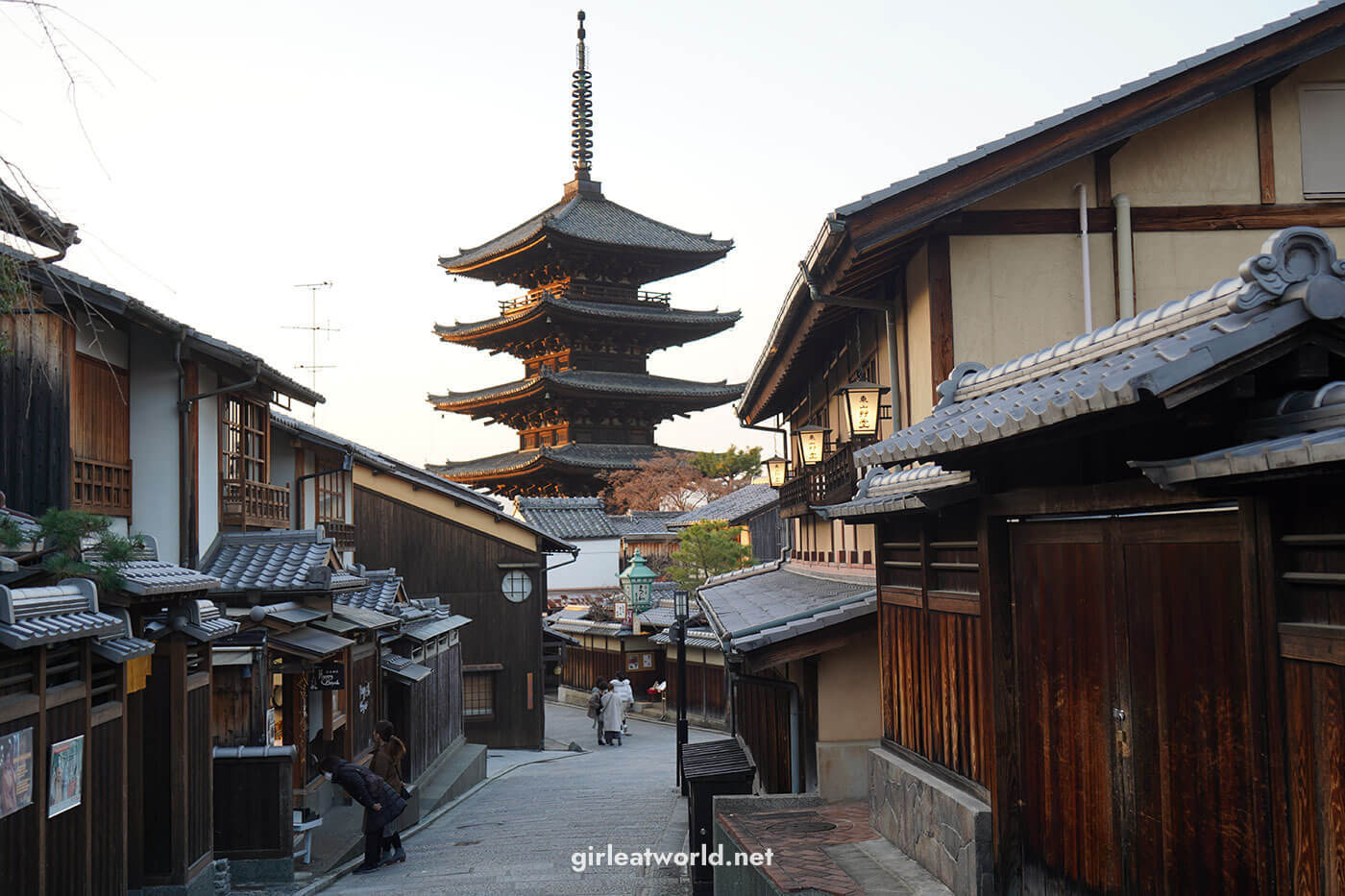
Here are the topics we will cover:
- Planning your trip to Kyoto
- Kyoto itinerary, what to do and where to go
Tips for visiting Kyoto for the first time
1. Consider making Osaka your base – You might want to consider staying in Osaka when visiting Kyoto. Osaka is a great base for your trip if you’re interested in exploring other things in Kansai aside from Kyoto, as I have outlined in my Osaka itinerary blog post here. I’ve also made some recommendations on where to stay in Kyoto here.
2. It’s going to be crowded – Let’s face it, Kyoto is not a hidden gem by any means. It’s popular with both domestic and international tourists. You’re going to deal with crowds no matter when or what season you go to Kyoto, unless you’re willing to skip the well known spots I mentioned below. But I think Kyoto is still charming and a must-do for first time visitors!
3. Etiquette when encountering a Geisha on the street – Kyoto is renowned for its geisha culture, but if you happen to see a geisha, it’s important to respect their space. You’re not allowed to speak to them or touch them. Geishas put hours into getting ready for their appointments, and the kimono they are wearing are usually expensive (some are up to $10,000!). Touching their prized clothing is considered impolite. Additionally, taking photos without permission is discouraged. When seen on the street, geishas are in a hurry and can not entertain requests for photos. In Kyoto, you’d likely see them in the Gion district, which is part of my Kyoto Day 1 itinerary.
4. Learn how to handle your luggage while traveling in Japan – Moving from one city to another while in Japan? You don’t have to carry your luggage everywhere! You can either send it to the next destination or store it in a coin locker.
I have elaborated more about this in the “Handling your luggage in Japan” section of my Japan travel guide, so be sure to check it out!
5. Using coin lockers at Kyoto Station – Please be aware that the coin lockers are first come first serve, and they may be all taken up if you’re at a popular train station like Kyoto. To ensure you have a space, pack in the morning and store your luggage first. On my first visit to Kyoto, I was not able to get any lockers at the Kyoto station since I was arriving after most hotel guests had checked out. I ended up having to carry my backpack everywhere around Kyoto.
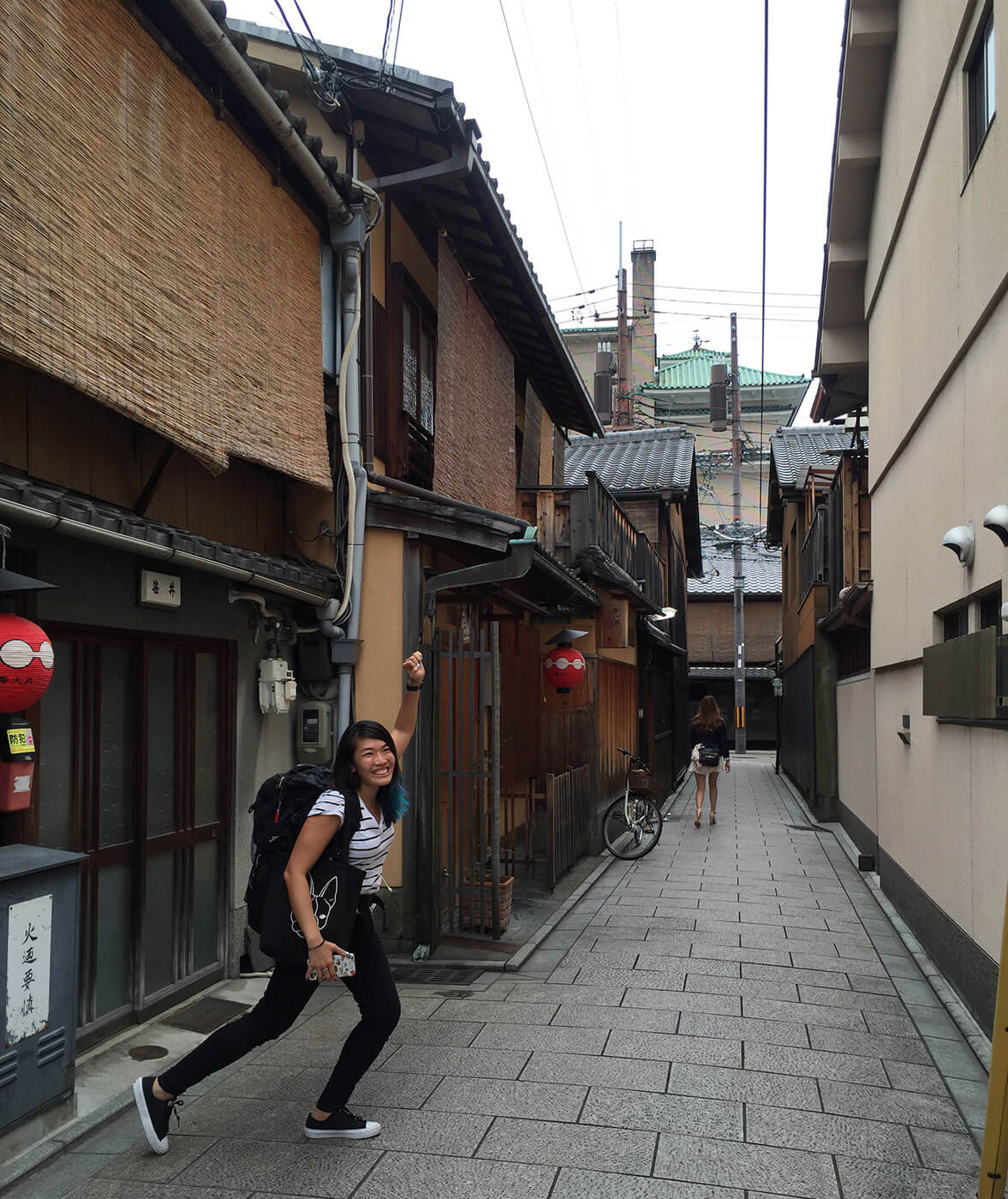
6. Read my Japan Travel Guide – I’ve consolidated all of my general Japan travel tips and guides in one post. If this is your first time in Japan, you might benefit from reading that post!
How can I get to Kyoto?
First things first, let’s cover the ways you can get to Kyoto. Kyoto is located in the Kansai region, around 500km south of Tokyo. Here is how you can get to Kyoto:
1. Fly to Kansai International Airport (KIX)
For foreign visitors, the best and fastest way to get to Kyoto is to fly directly to Kansai International Airport (KIX) and then take the train or bus to Kyoto, going through Osaka.
There are several ways to get to Kyoto from KIX:
Option 1: JR Haruka Airport Express Train (Fastest way)
From Kansai International Airport to Kyoto station, it takes about 1 hour 20 minutes by Haruka airport express train. This is a direct train, meaning you won’t have to step out of the train at all, making it a very convenient option to get to Kyoto.
JR Haruka Airport Express Ticket: You can purchase Haruka airport express train ticket here.
PS: If you’ve purchased a JR Pass, this journey might already be included with your pass. Please double-check before purchasing!
Option 2: Airport Limousine Bus
There is also a direct airport limousine bus that takes you directly from KIX to Kyoto station. The journey takes about 1 hour and 40 minutes.
Airport Limo Bus to Kyoto: You can purchase the ticket here
2. Take the Shinkansen, Japan’s ultra-fast bullet train
If you’re thinking of making Kyoto one of your stops on a long trip to Japan, it’s very possible to take Shinkansen. From Tokyo, it will take only 2.5 hours to reach Kyoto by Shinkansen.
🚆 Book train ticket online: Purchase Japan train ticket via Klook for easy redemption at the station once you’re in Japan.
The Shinkansen conveniently drops you off at the main Kyoto station or Osaka station, depending on where you’ve decided to base yourself (I’ve written about this topic here), and from there you’ll be able to take local trains to wherever you need to go.
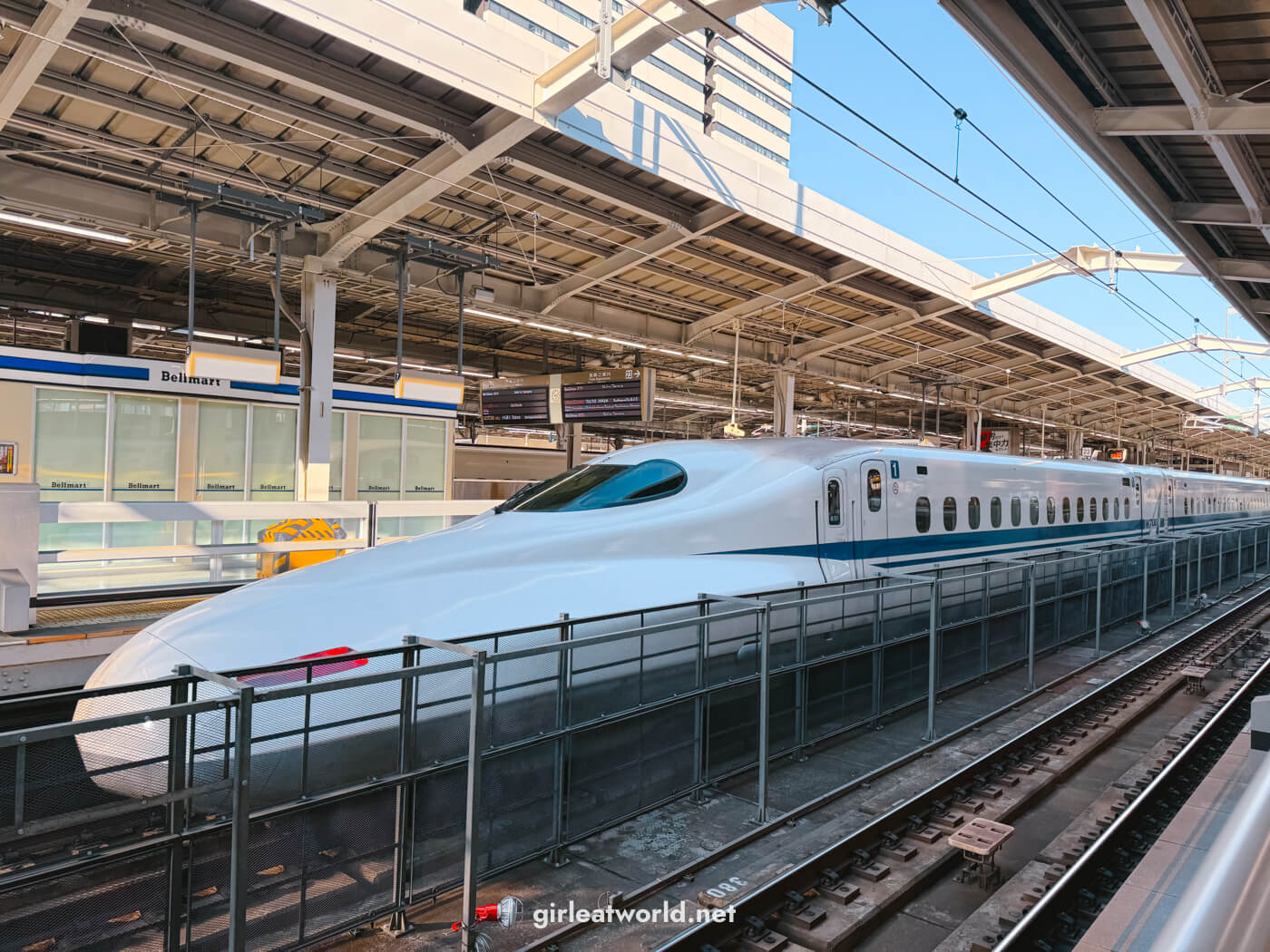
If you have a JR pass, it’s possible to cover this journey via JR Pass. Just make sure you’ve purchased the JR Pass that covers both areas. You can learn more about taking the train in Japan here.
How many days should I spend in Kyoto?
You should be able to see most things you want to see in Kyoto in 2 days, but it really depends on your travel style. If you wake up early and are okay with being out and about exploring the entire day til night time, then 2 days will be enough.
However, if you prefer to take things slow, there are enough things to do in Kyoto to fill 3 to 4 days of slow travel. You can read through my 2-Days Kyoto itinerary below and decide for yourself!
When is the best time to visit Kyoto?
Without a doubt, the best time to visit Kyoto (and many other parts of Japan) is in the Spring during Sakura season or Autumn during Momiji season. You can click on the links to determine the best times as it varies every year.
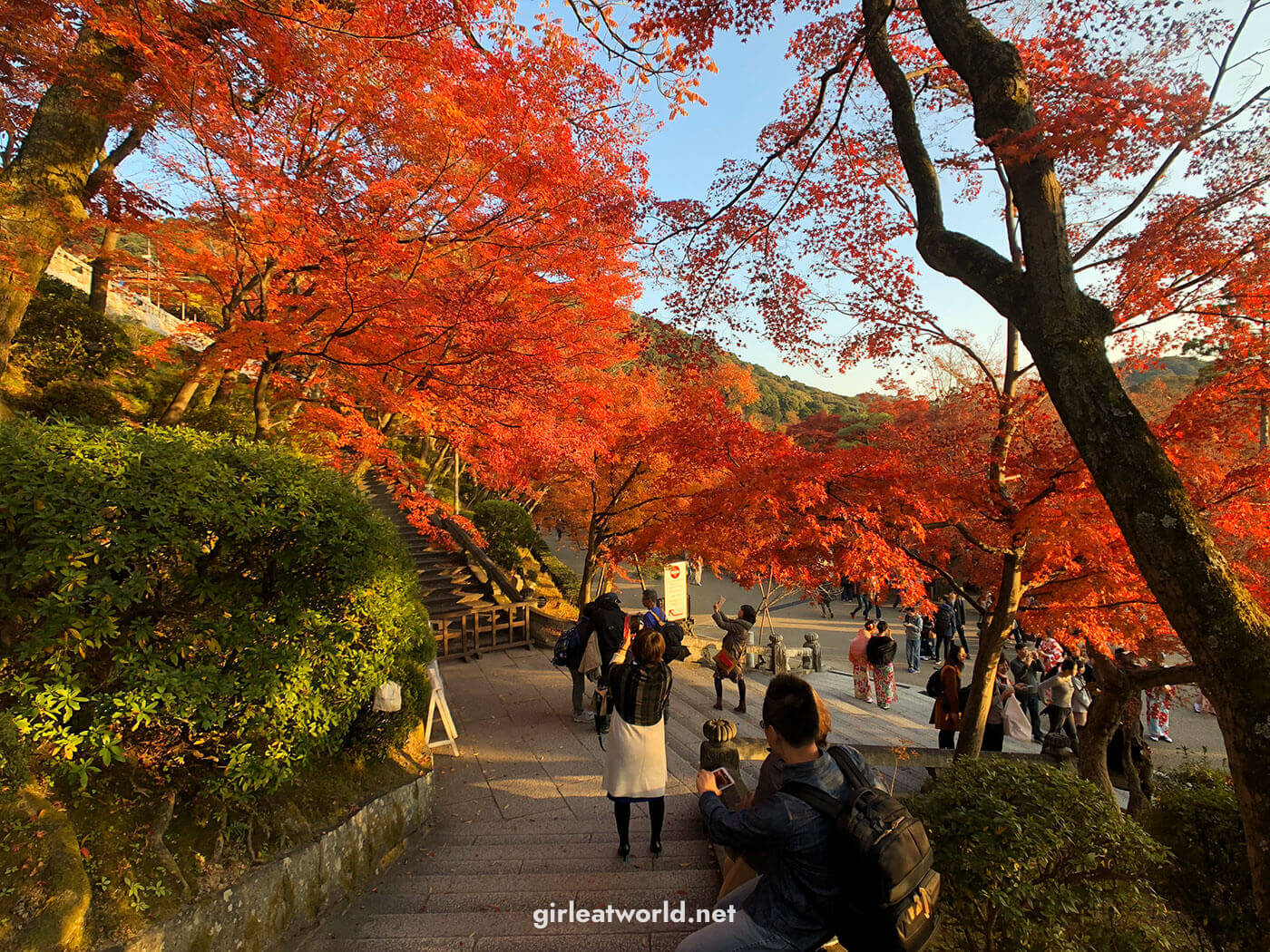
Kyoto (and all of Japan) will be insanely beautiful during these two seasons. However, these periods are also probably the most popular time to visit Kyoto, so expect a lot of crowds at places like Kiyomizu-dera (which by the way, is covered with Momiji and extra beautiful in Autumn) and Fushimi Inari Taisha.
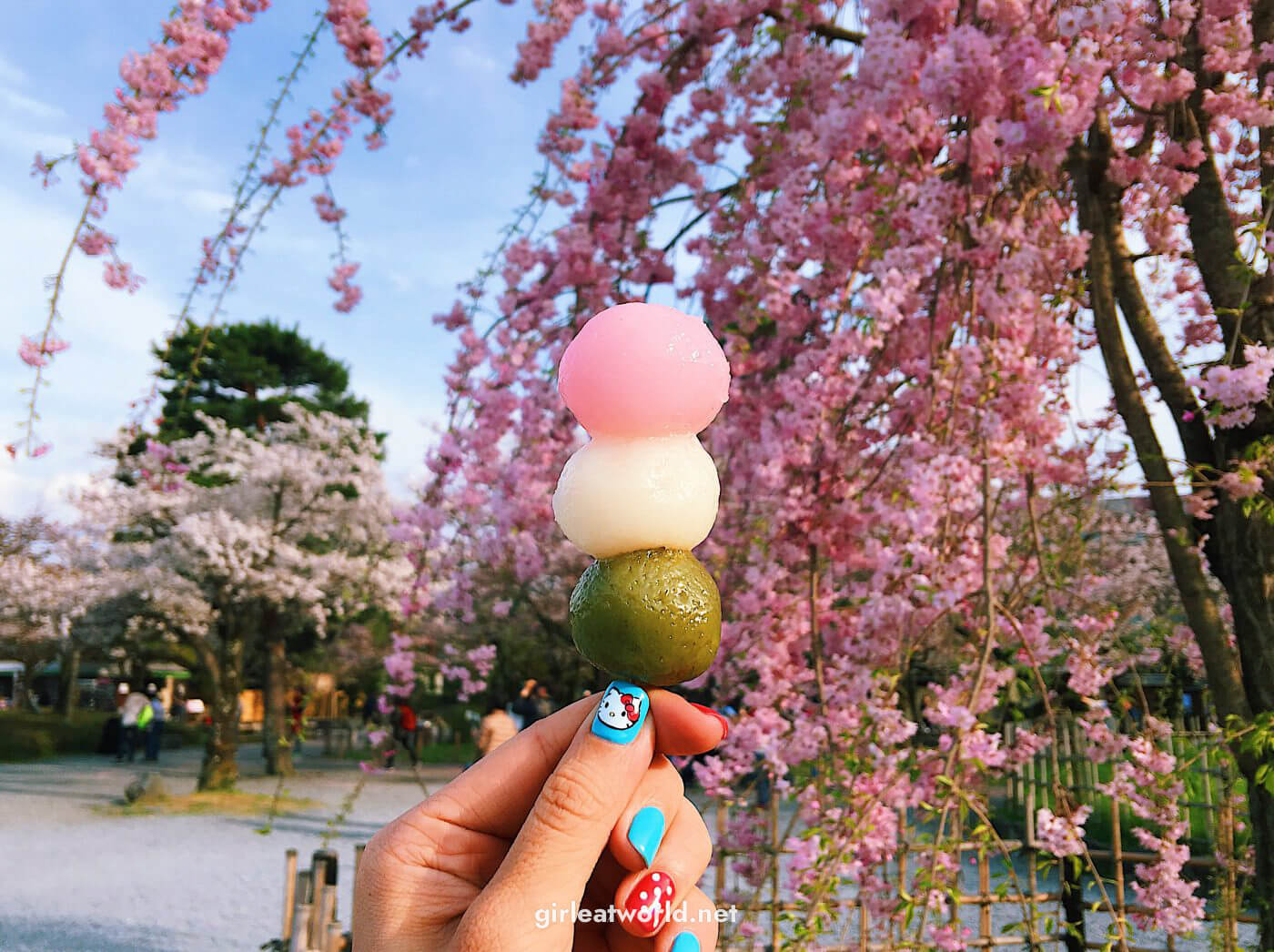
Avoid Golden Week which is the first week of May and Obon in the middle of August, as these two are big holidays in Japan. You’ll not only have to battle the international tourists coming to Japan, but domestic Japanese tourists too!
Where should I stay when visiting Kyoto?
I believe Osaka is a better place to base yourself especially if you’re interested in exploring other things in Kansai, as I have outlined in my Kansai itinerary post.
Staying in Osaka is my preference for many reasons:
- Cost – Accommodations in Osaka tend to be more diverse and affordable. Kyoto on the other hand is seen as a luxurious place to stay.
- Proximity – It only takes 15 minutes to reach Kyoto from Osaka by Shinkansen (which you’d be using if you have a JR pass) or 30 minutes by local train.
- Variety of activities – Kyoto gets pretty quiet (read: dead) by nighttime, whereas Osaka, being the second largest city in Japan, is still very lively at night so you’ll still find plenty to do. This could be a pro for some people though!
- Ease of reaching more destinations – Osaka is a great base if you’re exploring other areas in Kansai, since it’s located right in the middle of everything with great train connectivity. If you stay in Osaka, you won’t have to change hotels.
➡️ Where to stay in Osaka: If you want to know where you can stay in Osaka, check out my Osaka travel guide.
Accommodations in Kyoto
That said, I understand that some people prefer the quaint and stillness of Kyoto. So for those who prefer, it is still worthwhile to stay in Kyoto. Here are some good places you can consider for staying in Kyoto:
- Yadoya Manjiro – If you want the true Japanese experience, you’d want to stay in a ryokan (traditional Japanese inn). Yadoya Manjiro is located a stone-throw away from Kiyomizu-dera, making it extremely convenient to explore the quiet old streets of Kyoto at night, once other tourists have left Kyoto.
- Kyoto Higashiyamaso – Another ryokan in the same area as Yadoya Manjiro. You really can’t beat the location!
- Kyoto River-view House Kyoraku – with rooms starting from US$70 a night, this is probably one of the most affordable options in Kyoto. It is located in the more modern part of Kyoto closer to the main station, but still within walking distance of the old Kyoto part.
How can I get around Kyoto?
Okay, now that we’ve covered the basics. How can we get around Kyoto? There are a few ways:
1. Using local train and bus
As with most cities in Japan, Kyoto’s public transport is top-notch. You can easily use Google Maps to chart out how to get from point A to point B with public transport in Kyoto. Make sure you know how to do this on Google Maps!
Kyoto has both train and bus system, but you might find yourself taking the bus more often. In Kyoto, you board the bus from the back and pay when you get off from the front.
I highly suggest getting a train card (IC card) if you plan to use public transport. It just makes everything so much easier, since you don’t need to buy a ticket for every journey – you just have to tap the card in and out of the station. The local train card is called ICOCA in Kansai, but if you have Suica or Pasmo from Kanto / Tokyo (or IC card from other regions), those should work here too.
Good news for iPhone users – the IC cards have gone virtual and you can use your iPhone itself as an IC card! This makes everything even more convenient, as you can refill the balance via your phone without having to go to the station. Note that you do not need to buy a physical IC card to do this, just start the process straight from your Apple Wallet!
Virtual IC Card: Read up on how to travel in Japan without a physical IC Card here!
2. Renting a bicycle
One option that not many people know about is renting a bike in Kyoto. This is what I did on my first visit to Kyoto and it allowed me to see more of the city that I wouldn’t get to see if I had stuck to using the train.
The tourist area in Kyoto is not actually that big, so this is a very feasible option and locals bike a lot. We biked from Kyoto station to Arashiyama, which only took about an hour even with some detours.
🚲 Hidden Kyoto E-Bike Tour: If you want to try biking in Kyoto while sightseeing, I recommend booking this E-Bike Tour. E-bike is a very popular option with locals for commuting. It allows you to bike with less effort so you won’t get tired.

3. Renting a car
On my latest visit to Kyoto, we rented a car as we were traveling with a small child. But I would warn that exploring Kyoto by car is not the most ideal – the streets are narrow in the areas that you would want to visit as a tourist. Parking can also get expensive in Japan. We paid 1,000 to 1,500 yen each time we moved and re-parked our car, which adds up quickly when you’re visiting multiple places.
However, it was certainly the most convenient way when traveling with a toddler. In that sense, I did not regret renting a car to explore Kyoto.
Rent a car in Kyoto: You can rent a car from near Kyoto station via Klook here. Don’t forget to bring your International Driver License!
2 Days in Kyoto Itinerary
I think it is possible to visit Kyoto in 2 days, but you will need start your day early and plan your route well if you want to see everything.
I’ve put together some must-visits in sections based on their proximity to each other so that you can optimize your trip by choosing which sights you want to visit on the same day. Please note that this itinerary is not meant to be done chronologically so you can mix and match your days.
Also, don’t feel bad if you did not get to do everything… It’s just an excuse to come back 🙂 that’s one of the reasons why I’ve been to Kyoto three times!
Here is how I would suggest you break up 2 days in Kyoto:
- Day 1: Explore the eastern part of Kyoto
- Day 2: Explore Arashiyama on the western outskirts of Kyoto
To visualize this Kyoto itinerary better, I’ve created a Google Maps link that marks all the routes and landmarks I’ll mention in this blog:
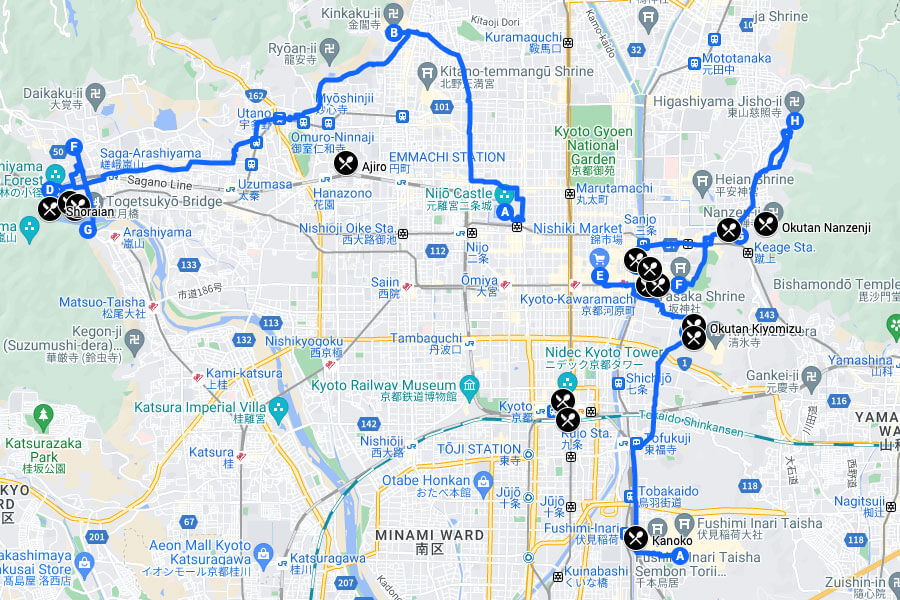
🗺 Save this map to your phone! If you are a Google user, click on the image of the map above. The map will then be saved to your “Recent” maps viewed. Click here for instructions on how to view the map later. It will work from your phone too.
And finally, let’s go through the itinerary day by day:
Day 1: Explore the Eastern Part of Kyoto
The eastern part of Kyoto is quite possibly the most well-preserved part of the city. The buildings here are kept low (at most two levels) and preserved in the style of traditional old Japan. That’s why this part of Kyoto is very popular with tourists!
Today’s itinerary will take you along to see the must-see landmarks in Kyoto. You’ll be walking around a lot, so be well prepared for it! Wear your comfy shoes.
Here is how you can spend your time in the eastern part of Kyoto:
- See Senbon Torii at Fushimi Inari Taisha
- Visit Kiyomizu-dera
- Stroll around Higashiyama District
- Nishiki Market for meals
- Explore Gion District
- Take a walk down the philosopher’s path
- Visit Ginkaku-ji
- Dinner at Pontocho Alley
Let’s dive into the details:
1. See Senbon Torii at Fushimi Inari Taisha
Tip: Fushimi Inari Taisha and the Senbon Torii path are open 24/7. If you want to avoid the crowd, you can come here at off hours, either early in the morning or after the sun has gone down.
When you think of Kyoto, I’m willing to bet the first thing that comes to mind is the rows upon rows of vermilion-colored torii that is symbolic of Japan. Well, these rows of torii can be found at Fushimi Inari Taisha, called Senbon Torii or “thousands of gates”.
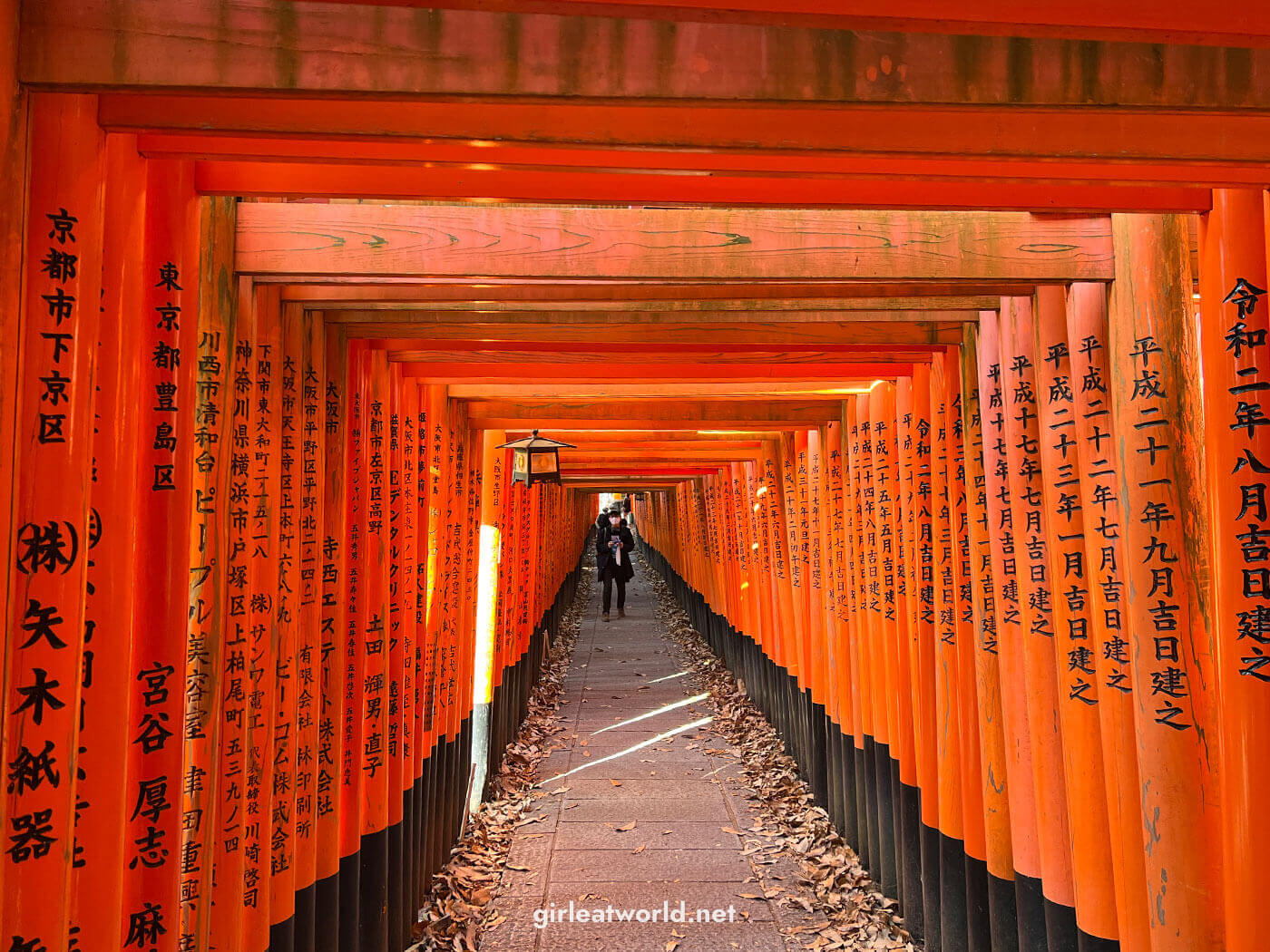
Fushimi Inari Taisha is one of Kyoto’s most iconic Shinto shrines. Established in the 8th century, the shrine is dedicated to Inari, the Shinto god of rice and agriculture. Although Fushimi Inari Taisha is one of the most popular sites in Kyoto, the Senbon torii path is always open. If you start early in the morning, maybe around 6 AM, you can go all the way up to Mount Inari with hardly anyone around.
To find Senbon Torii, enter the temple area and go past the shrine, then continue your hike up and you’ll see the torii soon. The rows of torii doubles as a 5km trail up to Mount Inari. If that sounds too much for you, please know that you don’t actually have to go all the way up. You could just walk a little bit of it and circle back down.
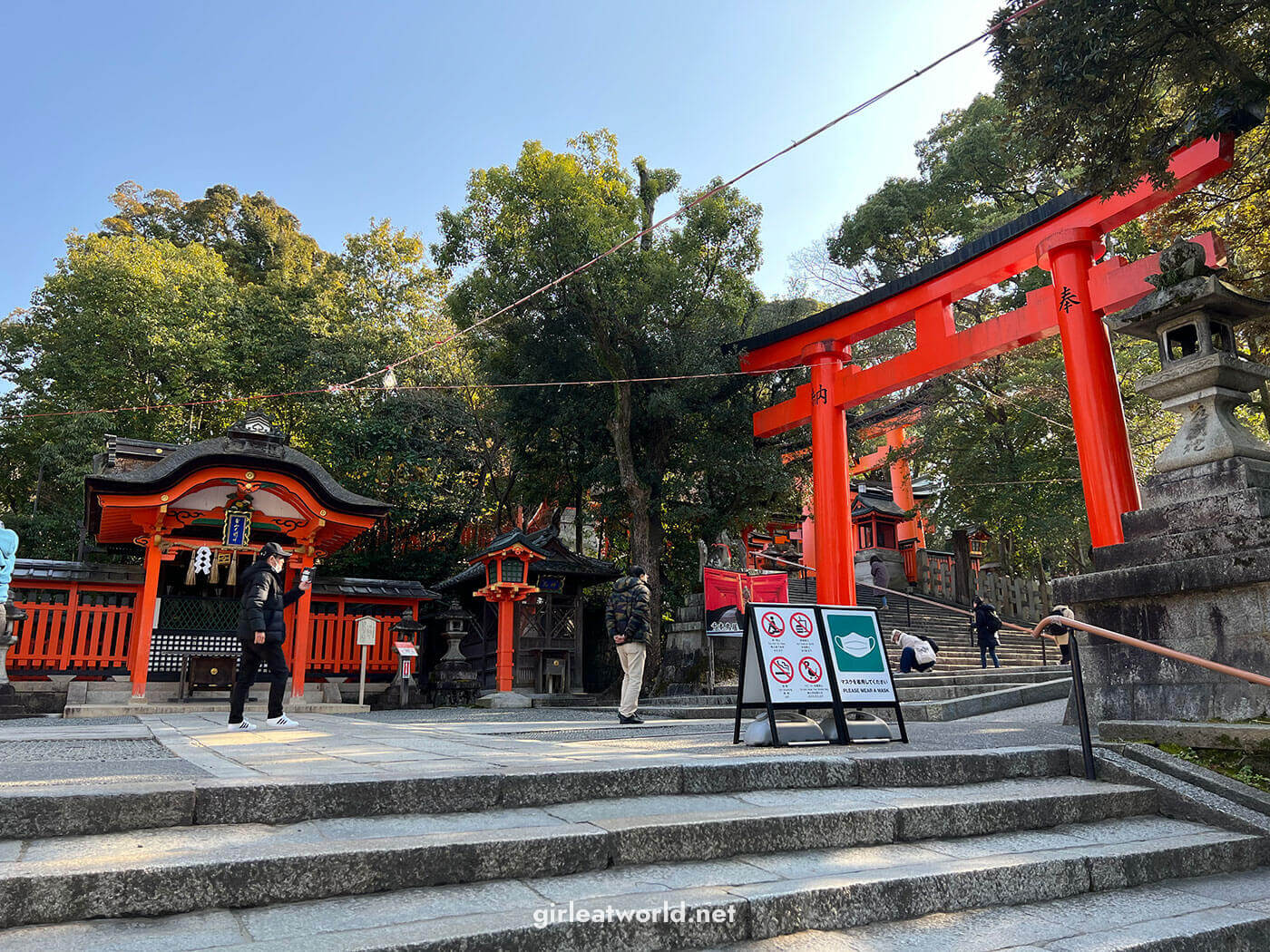
In the three times I’ve been to Kyoto, I’ve never made it up to the top of the mountain due to time constraints, but I’ve been told the further away you go, the lesser the crowd! I would go up all the way if I had the time.
The main temple area is also worth a visit. I got this super adorable Ema (wooden plaque for prayers) shaped like a torii for 800 yen. You’re supposed to write your wishes on an ema and leave it at the temple, but you could also take it home as a souvenir like I did.

Another thing you might want to do while at the temple (or any other temple in Japan) is purchase an Omamori, a small amulet containing a blessed piece of wood meant to protect you or you can gift it to your loved ones for their protection. They cost 500 to 1,000 yen and there are different types of Omamori for different purposes – for health, giving birth, for students, etc. Most temples in Kyoto will have signs in English explaining what they are!
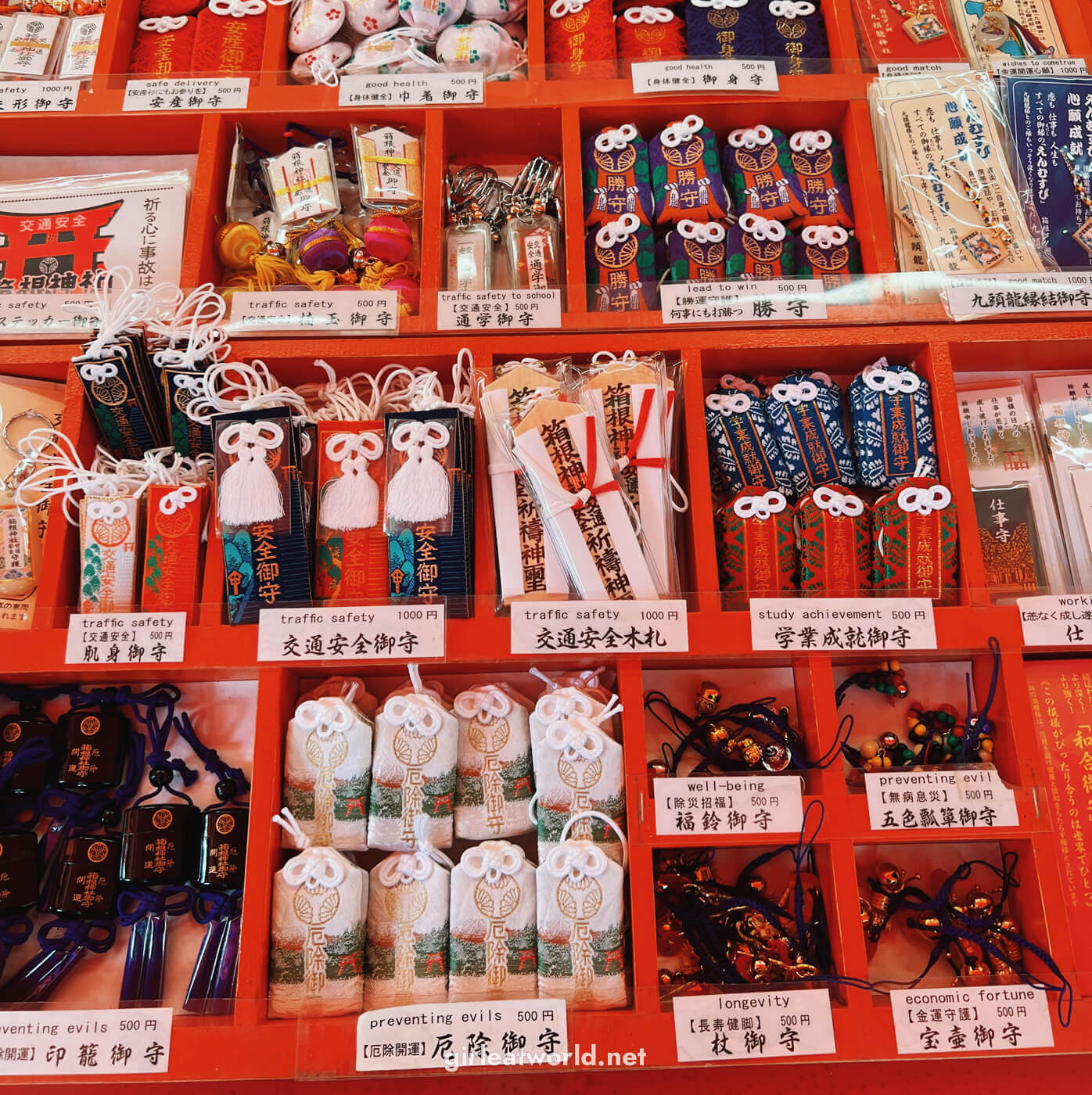
There is a great restaurant nearby the entrance of Fushimi Inari Taisha if you are here in the later part of the afternoon, called Kanoko. Scroll down for more info and my food recommendations in Kyoto!
2. Visit Kiyomizu-dera
Kiyomizu-dera, a historic temple in Kyoto, is undoubtedly one of the most famous sights in Kyoto. Renowned for its stunning wooden stage that juts out over the hillside, it was founded in 778 AD. Kiyomizu-dera is a UNESCO World Heritage Site and is dedicated to Kannon, the Buddhist goddess of mercy.
Tip: Kiyomizu-dera opens very early at 6 AM, so if you want to avoid the crowd I suggest being there when it opens.
There is a public area outside which you can explore for free, but there is also a ticketed area that costs 400 yen per person to enter. I skipped the ticketed area on my first two visits because it was very crowded and there was a line to enter. But I finally went in on my latest visit – I can honestly say the ticketed area is well worth it!
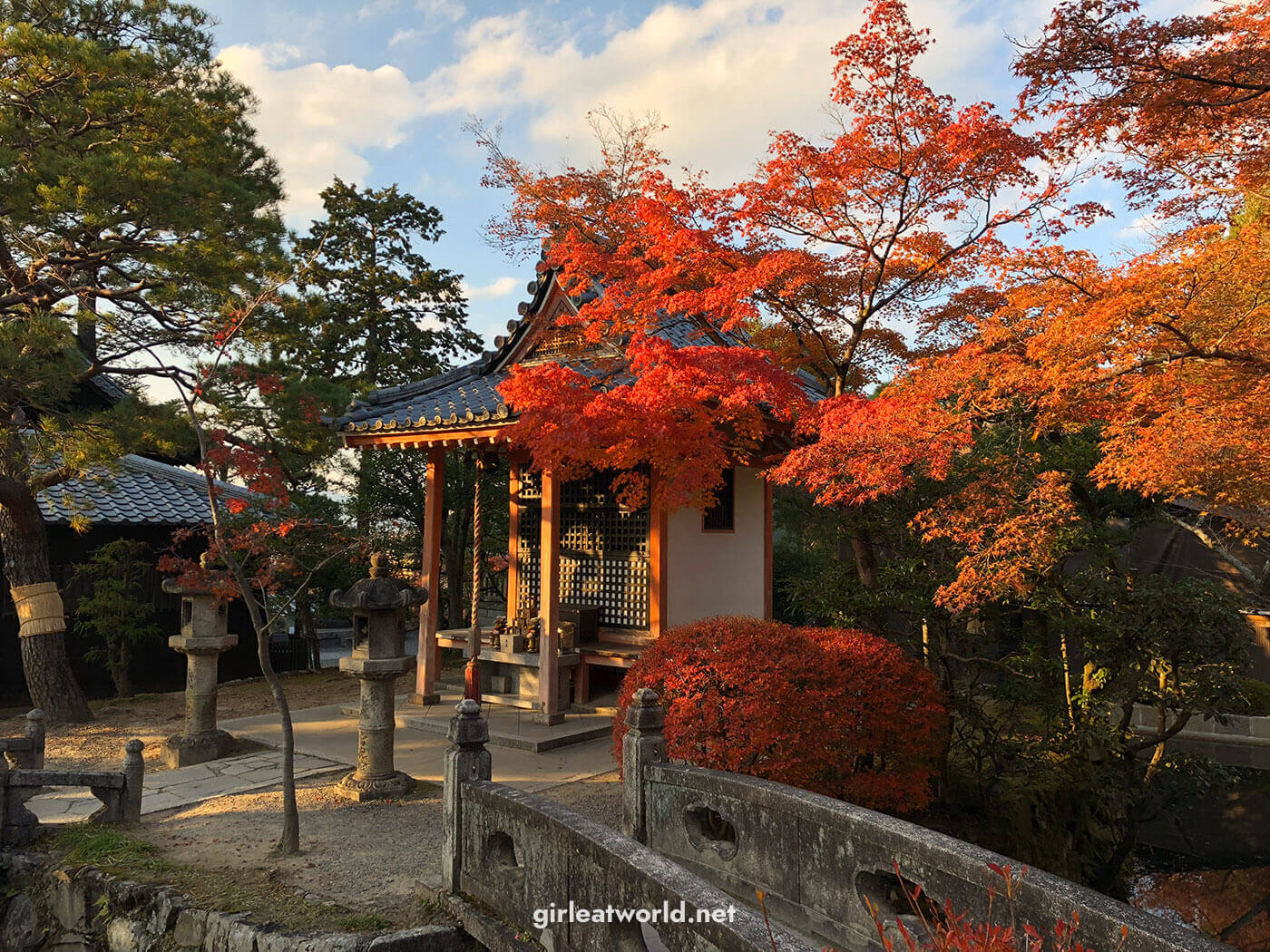
If you decide to enter the ticketed area, you can see the actual Kiyomizu-dera main hall. Take a moment to marvel at the ancient Japanese architecture, which is built on a cliff and without using any screws or nails – just wooden joinery! This is a feat unique to Japanese temples.

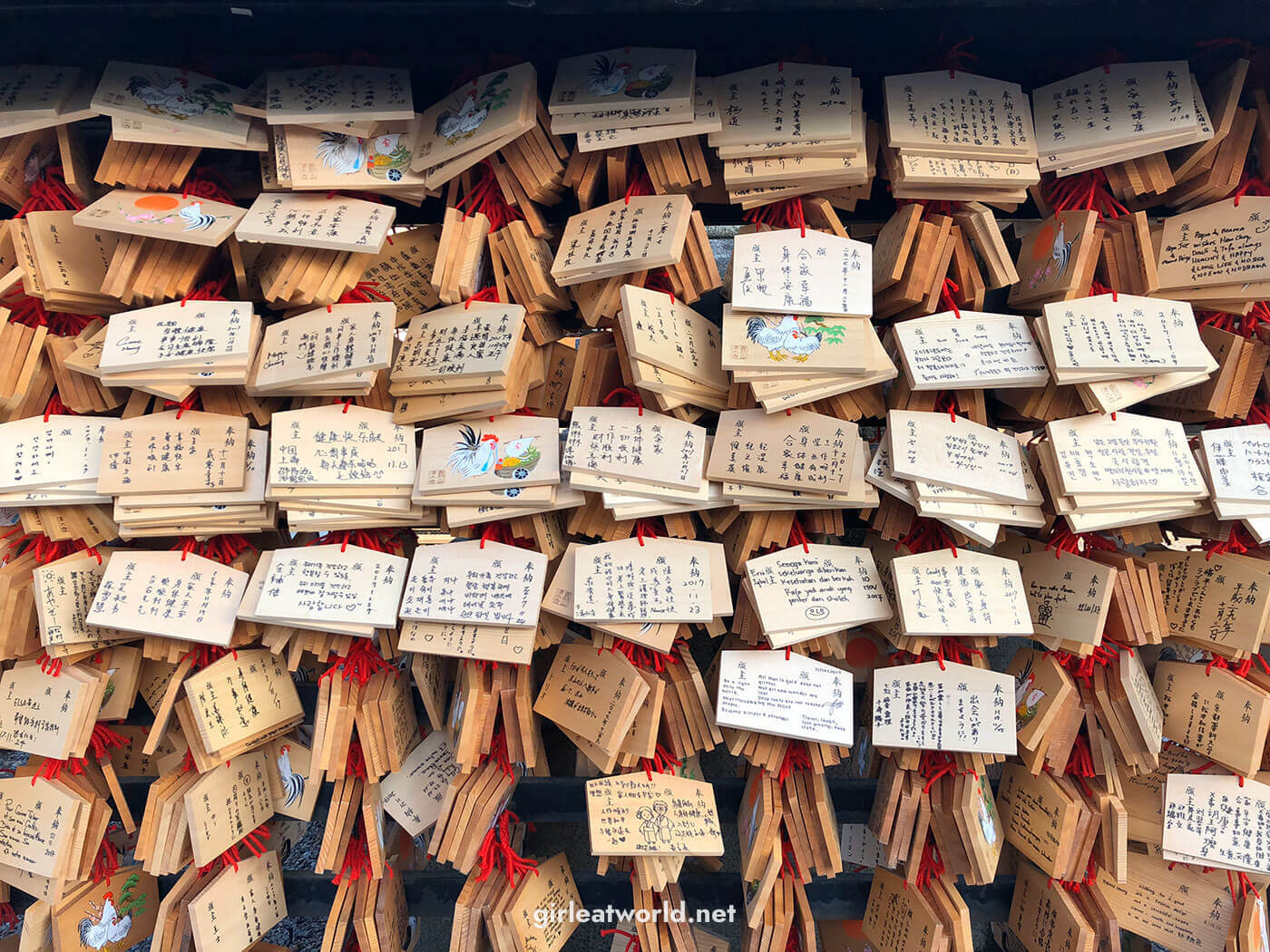
Past the main hall, you’ll be taken on a path to walk around the garden which is filled with Japanese maple tree and cherry blossom trees. This area will be especially beautiful during Sakura and Momiji time. There is another smaller temple dedicated for safe delivery (fertility and giving birth is a common theme in Kyoto, I noticed) where you can see the main hall from afar.

Kiyomizu-dera means “Pure water temple”, derived from the Otowa Waterfall that runs beneath its main hall. You can take some water for drinking. The water here is considered to have many good fortune benefits.

Next to it is a small teahouse where you can have snacks and a light lunch.
3. Stroll around Higashiyama District
Kyoto is charming for its quaint old Japan vibe. Well, the old Japan preserved area is mostly located in the Higashiyama district.
Higashiyama means “eastern mountain” and that’s exactly where the district is located – along the slope of the eastern mountain of Kyoto. Kiyomizu-dera is already located in Higashiyama district, so it makes sense to explore Higashiyama after or before visiting Kiyomizu-dera for convenience.

At Higashiyama district, you can expect to see quaint traditional buildings, unique souvenir shops (this is a great place to pick up something to bring back home), small ryokan (Japanese-style inn), and street food vendors. It’s a very magical area to stroll around.
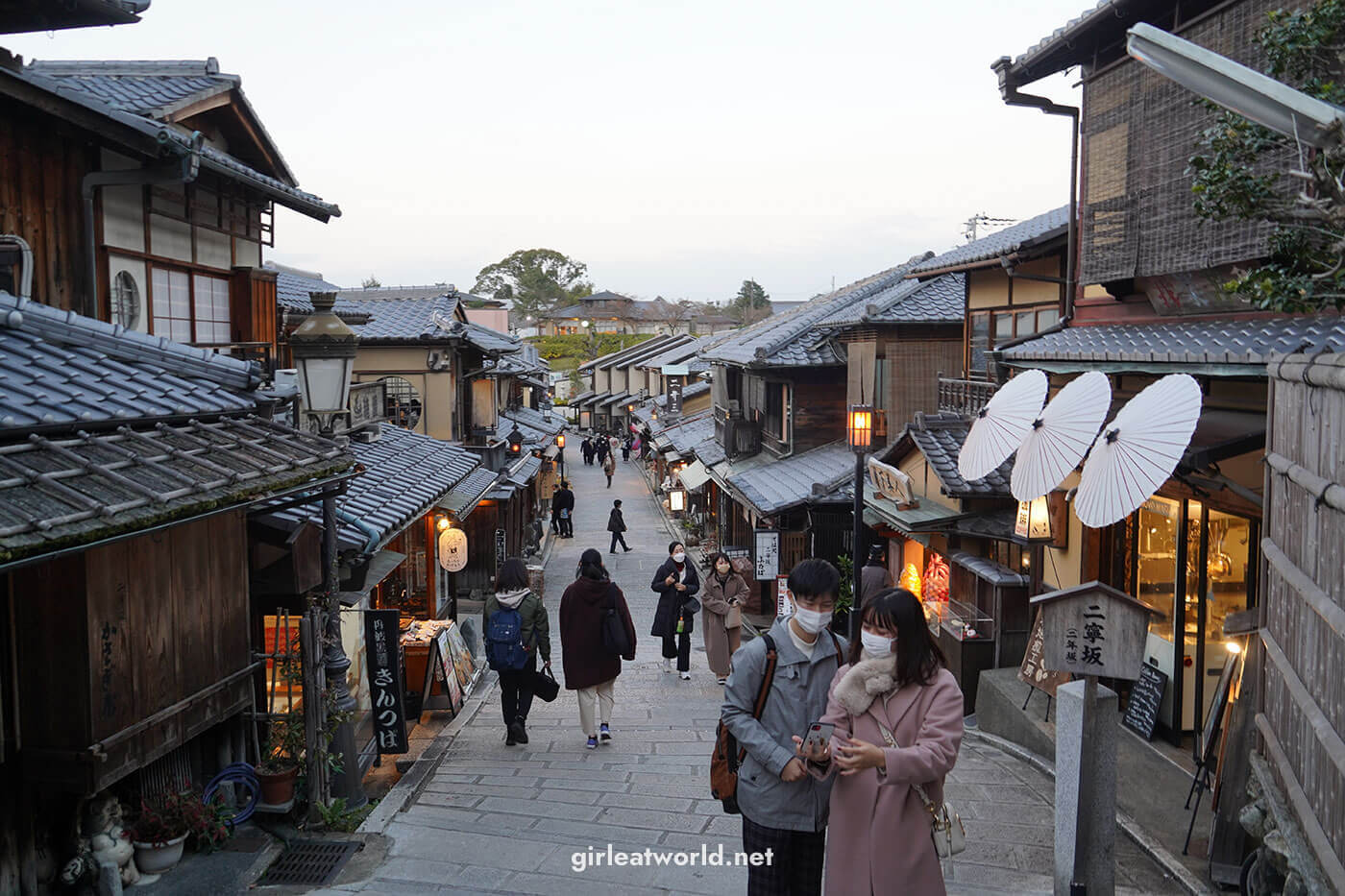
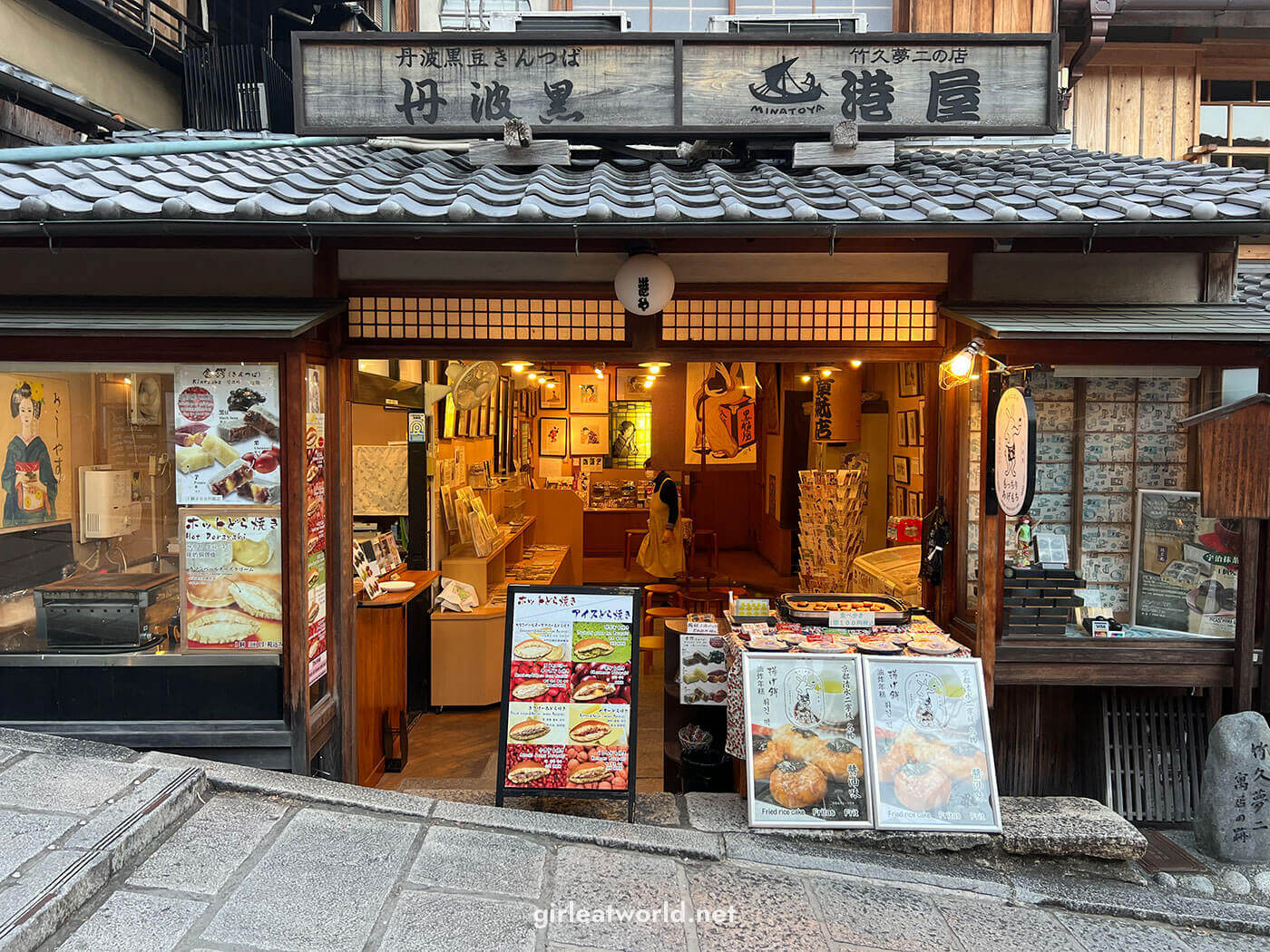
Aside from the obvious Kiyomizu-dera, there are a few places you won’t want to miss in this district:
1. Ninenzaka and Sannenzaka (literally translated two-year hill and three-year hill) – the slopes near Kiyomizu-dera that are symbolic of Kyoto. You can find souvenir shops and street vendors in this area.
2. Hidden Starbucks (map) – There is a Starbucks at Ninenzaka, but it’s not obvious as it does not have any of the iconic green Starbucks color. The facade of the store has been designed to fit the aesthetic of the rest of the neighborhood. Inside, you’ll find a garden on the first floor and traditional tatami seats (straw mats) on the second floor.
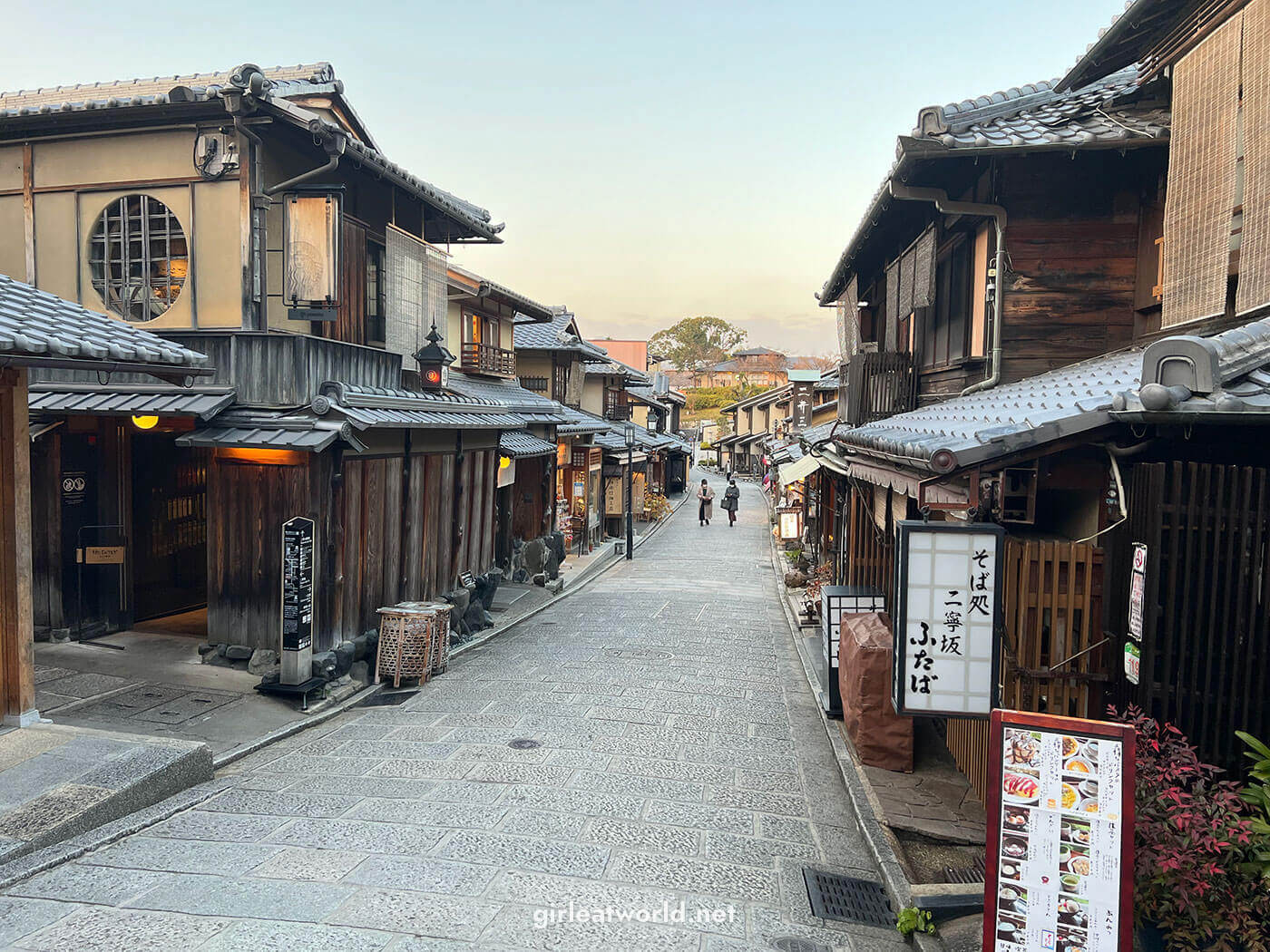
3. Donguri Kyowakoku – Studio Ghibli souvenir store (map) – if you are a fan of Studio Ghibli’s animation movies (and who isn’t?) make sure to stop by here for a chance to bring back some souvenirs home. A visit here is dangerous for the wallet – they have all kinds of things, from cups and utensils to stuffed toys and apparel.
4. Nishiki Market for meals
If you’re hungry, you can stop by Nishiki Market for meals. Nishiki market is a large food market that has been around for 400 years. It spans over 400m long (five blocks!) and houses 100+ food stalls.
You can find almost every traditional Japanese food and snack here. I’ve had sushi, sakura mochi, ichigo daifuku, just to name a few. They also have some regional specialties such as Narazuke, a traditional pickle that originates from Nara prefecture nearby.

Most of the market is indoors, making it a great option rain or shine. Take note though, that most of the food offered at Nishiki Market here will be served from small food stalls, meaning they may not have any seating. You’ll have to eat while standing up.
Nishiki spans long from east to west. To get to Nishiki Market, I suggest starting from the west entrance along Takakura-dori (I have marked the west entrance in my Kyoto Map above). You can then make your way to the east. Enjoy the market vibe and grab whatever food piques your curiosity. The market ends when you see a torii marking the entrance to Nishiki Tenmangu Shrine.
You could do it the reverse way too by going from east to west, but I recommended going from east to west because it’s easier to reach our next destination, Gion, by foot.
5. Explore Gion District
Right near Higashiyama is Gion district – also known as the Geisha district. Gion is not technically part of Higashiyama, but it’s very close by that you would just naturally end up here if you kept walking. The district is filled with tea houses where a geisha and a maiko might be doing their job as professional entertainers. There are also some high-end restaurants in this area.
In Gion, I recommend starting from Gion-Shijo station, then walking east to Shijo-dori, which is the main shopping street in the area that runs from east to west. South from Shijo-dori, you’ll find plenty of well-preserved historic teahouses at Hanamikoji-dori. I have marked the exact locations in my map above.
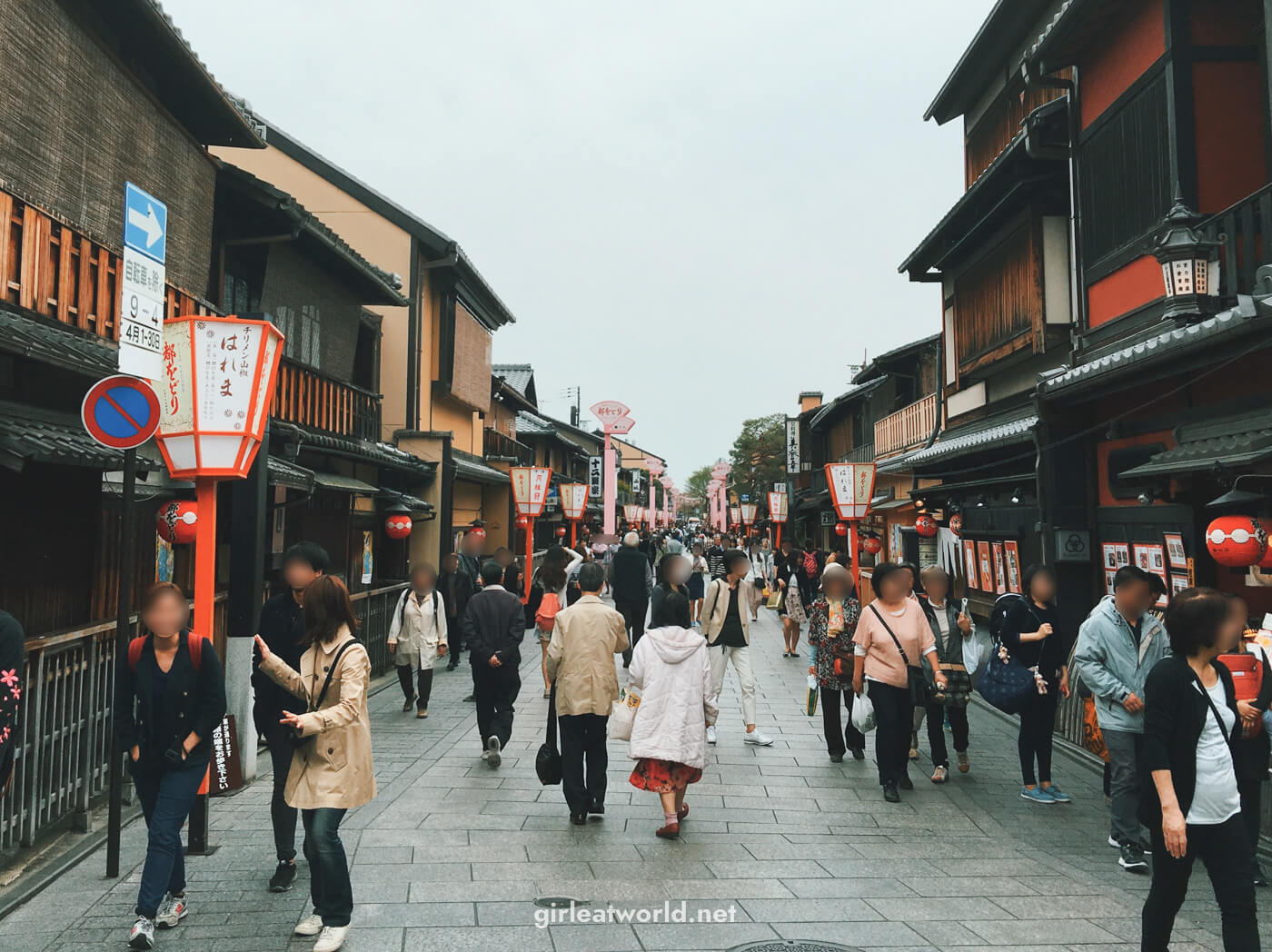
With Gion being a Geisha district, there is a chance you might see a geisha or a maiko (geisha apprentice) walking down Hanamikoji-dori on their way to their next appointment, especially if you’re there just before sunset. I would like to remind you again (as I have elaborated in the travel tips section above) that if you do happen to see a geisha, it is best to leave them alone.
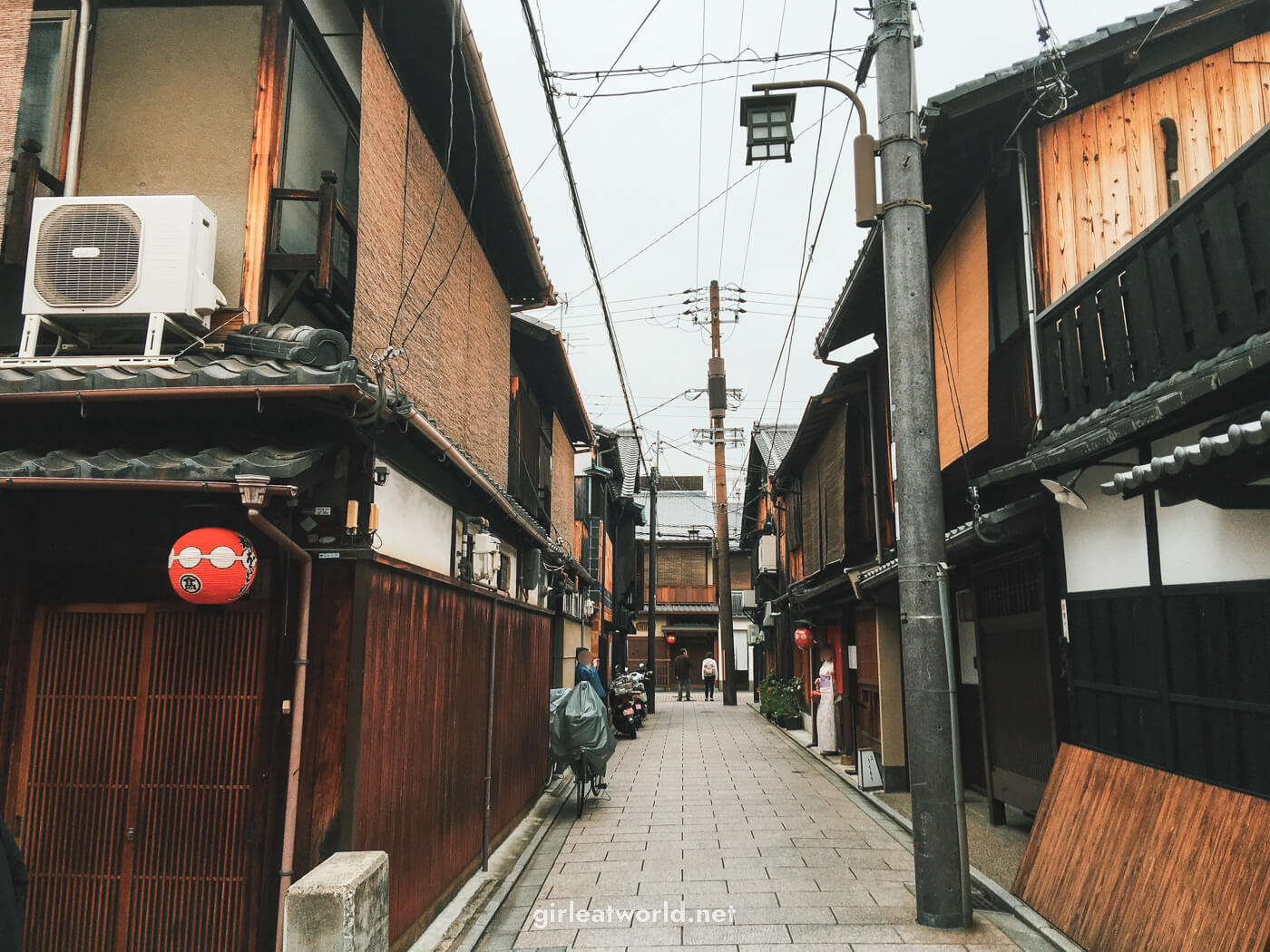
If you continue to walk to the east side, you’ll eventually come across Yasaka Shrine, famous for Gion Matsuri (Gion Festival) in the entire month of July. If you happen to be there on 17th or 24th of July, you’re in for a treat – this is the day when they will do float processions called Yamaboko Junko, where you can see a parade of highly decorated floats.
Yasaka Shrine is also one of the few temples that are always open 24/7. It is lit up at night, so you can visit at any time if you can’t make it during the day.
6. Take a walk down the philosopher’s path
Tetsugaku no Michi, aka Philosopher’s path is a beautiful serene path along the canal that takes you from near the old streets of Kyoto to Ginkaku-ji. The path gained its name from Kitaro Nishida, a famous philosopher from Kyoto, who would take this path as a way to meditate.
The path is lined with beautiful cherry blossom trees, so you definitely want to be here during Sakura season! However, it is still a good place to visit even if it’s not Sakura season.
You can start the walk from Keage incline. Find the start of the along the canal next to Kumano Nyakuo-ji, then continue your way up north on the philosopher path before ending up at Ginkaku-ji. The path is only 2km, and should take around an hour to complete.
7. Visit Ginkaku-ji
When you visit Kyoto, you’ve probably heard of Kinkaku-ji. But you may not know about Ginkaku-ji, it’s lesser known cousin. Their names are very similar but these are two different temples, located quite a distance apart from each other! Kinkaku-ji is Temple of the Golden Pavilion, while Ginkaku-ji is Temple of the Silver Pavilion.
Kinkaku-ji is located in northern part of Kyoto. Ginkaku-ji, on the other hand, is located within Higashiyama district. It was meant to be the silver version of Kinkaku-ji as the name might have indicated. However, the temple has remained “unfinished” and to this date, no silver foil has been used to coat the exterior of the temple.
8. Dinner at Pontocho Alley
This atmospheric alley next to Kamo River is filled with restaurants and mostly comes alive at night. It is a great choice if you’re looking to have dinner in Kyoto.
I recommend walking by Kamo River Noryo-Yuka, especially during night time where you’ll find people chilling out by the river bank. During summertime, temporary platforms (called kawayuka) are erected to cater to the riverside outdoor dining experience.
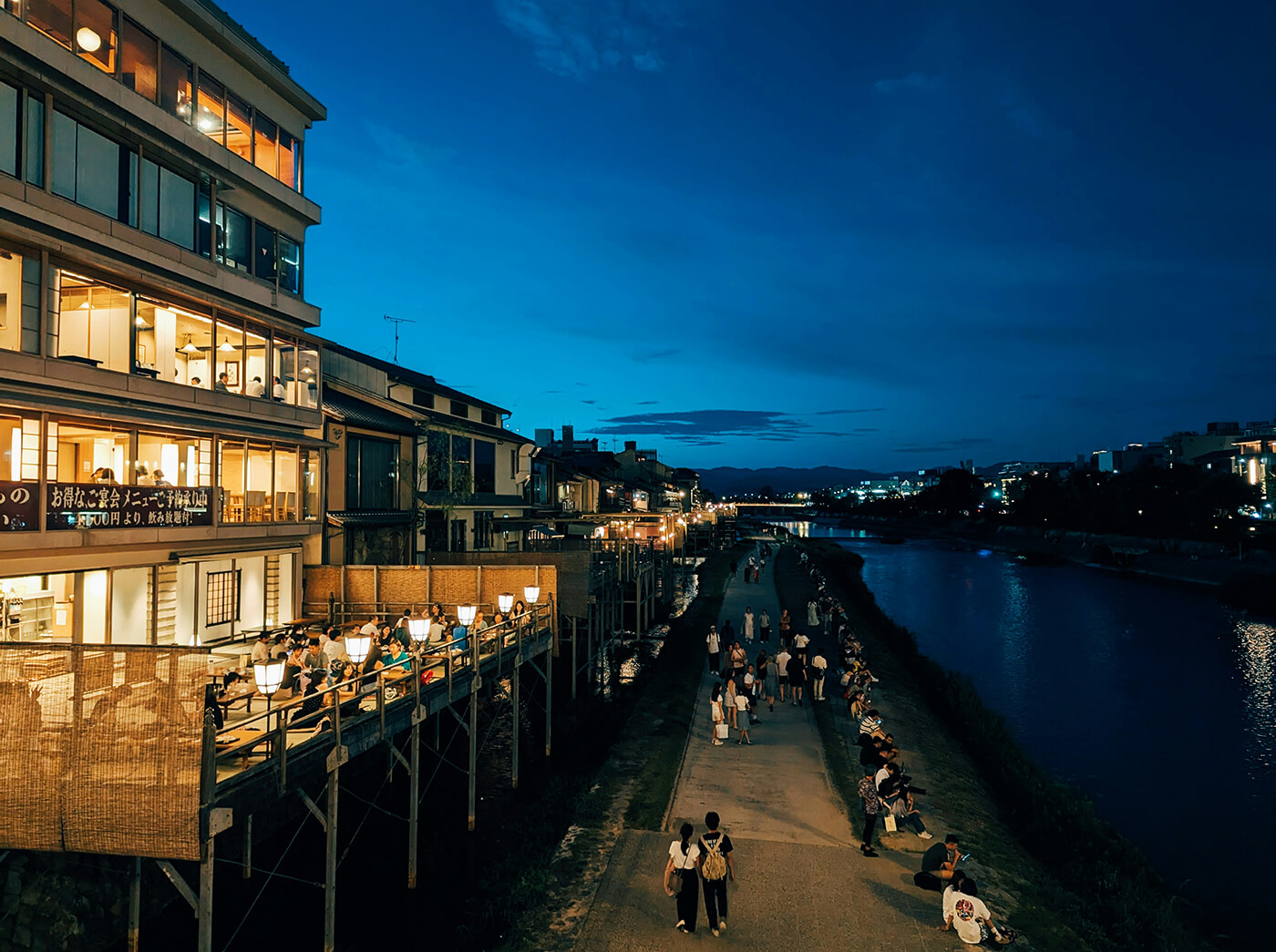
To find the location of the alley, you can start by locating Pontocho Kaburenjo, and the start of Pontocho Alley is just next to it. I’ve marked this on my Kyoto map as well.
While there are plenty of good food options here, you can try Gyukatsu Kyoto Katsugyu for breaded beef or Misoguigawa for Japanese-French food. The famous Kichi Kichi Omurice is also nearby, but an advanced reservation is recommended here due to their popularity.
Day 2: Explore Arashiyama, the western part of Kyoto
For this day, we will finish up some of the sites missed out on the first day of the itinerary, before heading out to Arashiyama on the western outskirts of Kyoto.
Here is what we will cover in today’s itinerary:
- Visit Nijo Castle
- Visit Kinkaku-ji in the morning
- Explore Arashiyama Bamboo Forest
- Stroll around the surrounding areas of Arashiyama
- Visit the temples in Arashiyama
- Take the Sagano Romantic Train
- Iwatayama Monkey Park in Arashiyama
1. Visit Nijo Castle
Nijo Castle, a UNESCO World Heritage Site in Kyoto, was built in 1603 as the residence of Tokugawa Ieyasu, the founder and first shōgun of the Tokugawa shogunate of Japan.
It is known for its impressive architecture, which uses a lavish amount of gold leaf and complex wood carvings to show off the wealth of Tokugawa shogunate.

The castle is also known for the nightingale floors (known as uguisubari in Japanese) at Ninomaru Palace, which makes a chirping sound when walked on. While it is not clear whether this is intentional or not, the chirping sound also served as a security feature – intruders could not sneak in undetected.
Nijo Castle opens early at 8:30 AM, so you could do this the first thing in the morning and then make your way to Kinkaku-ji.
2. Visit Kinkaku-ji in the morning
Kinkaku-ji, located in the northern part of Kyoto, is a unique-looking temple, with pure gold-leaf coating covering the top two levels of the temple. Initially, Kinkaku-ji was built as a retirement villa of shogun Ashikaga Yoshimitsu, but later turned into a temple after his death, as willed by him.
Kinkaku-ji is open from 9:00 AM, so you can quickly make your way there before going to Arashiyama.

3. Explore Arashiyama Bamboo Forest
Another famous visual from Kyoto is the serene Arashiyama bamboo forest. There are a few entry points to get to the bamboo forest, but I usually start from this point at Google maps, and keep walking until you end up at Kameyama Park.
I’m not gonna sugar coat it, the bamboo forest is a very popular activity and you’re definitely not going to be the only one here. Don’t let my photos fool you – I was lucky to visit during the pandemic when Japan banned foreign visitors from entering, but even then we were not the only ones at the bamboo forest.
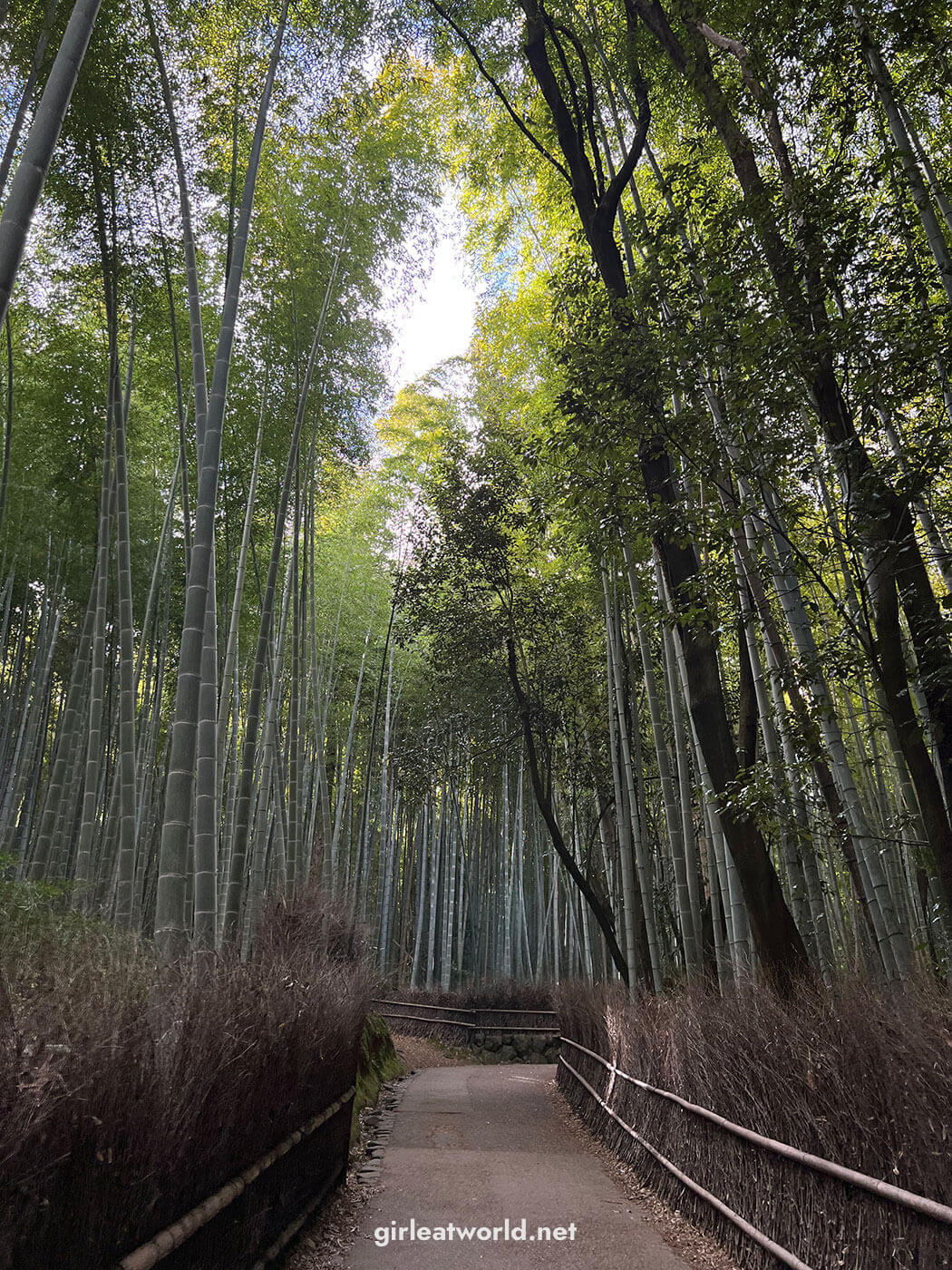
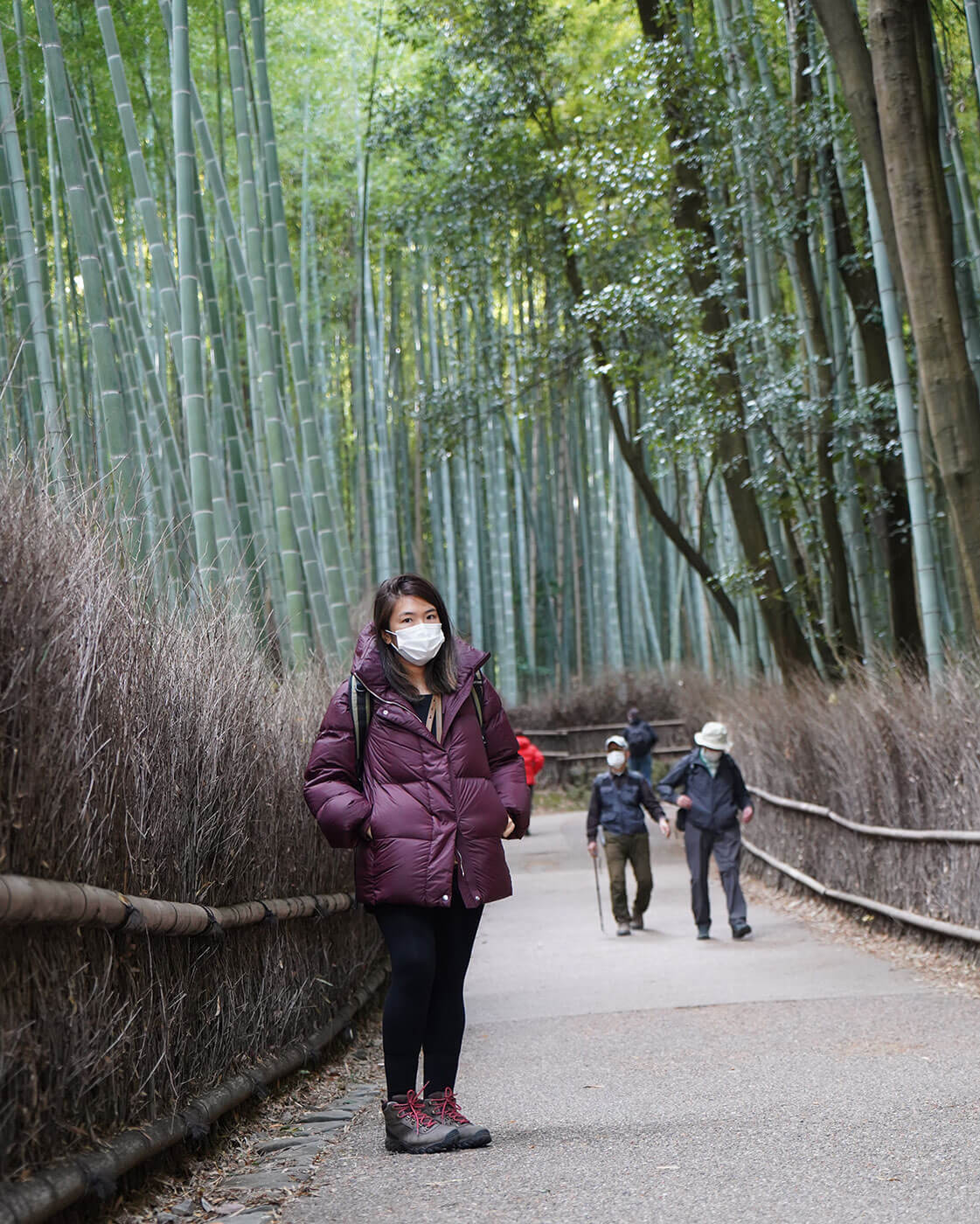
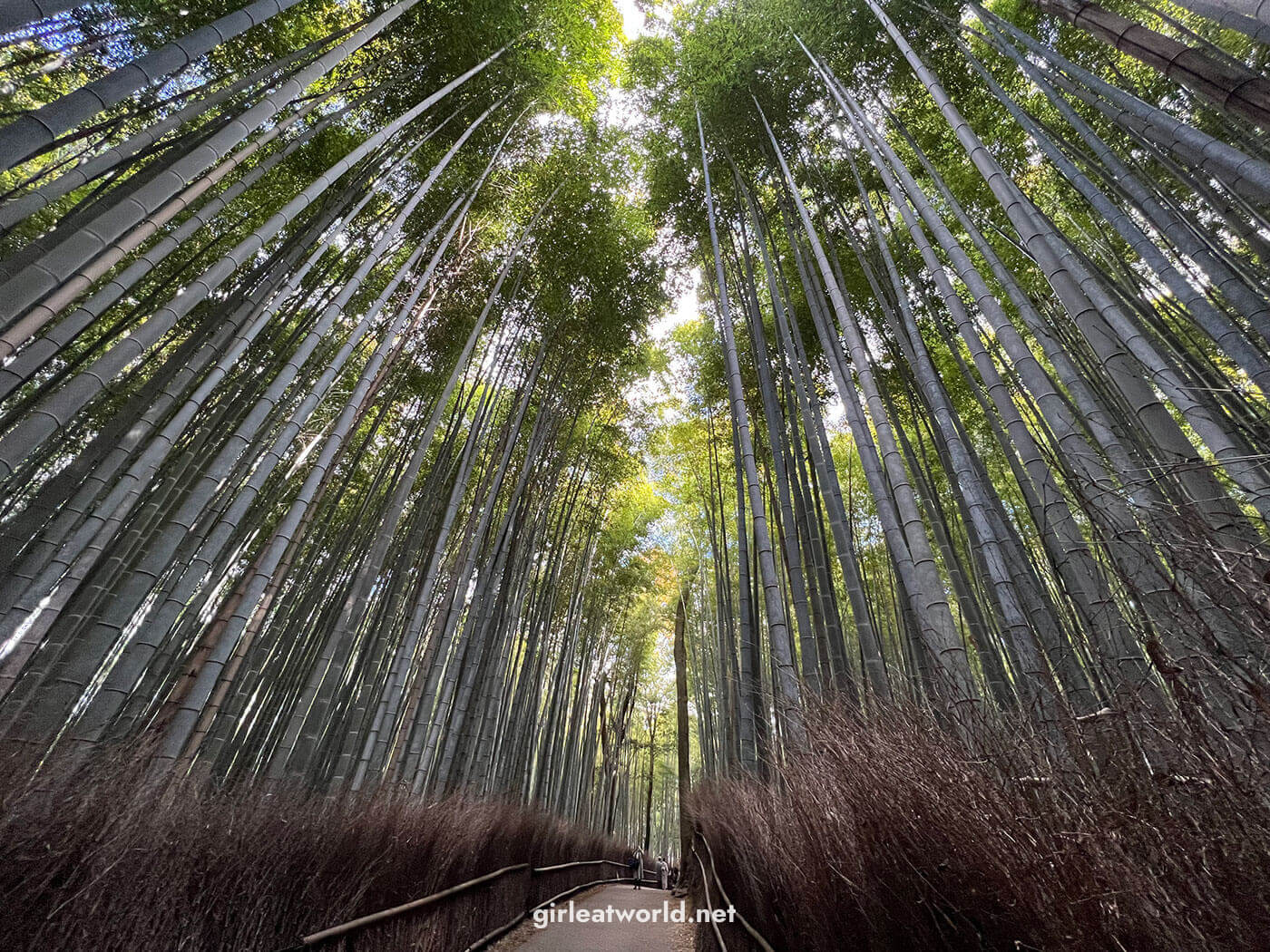
The bamboo forest path is not very long – it probably will take you 15 to 30 minutes max to walk.
4. Stroll around the surrounding areas of Arashiyama
Once you’re done with the bamboo forest, take some time to explore the area too! Kameyama Park offers a tranquil walk around, and there is a trail that takes you down to Katsura River.

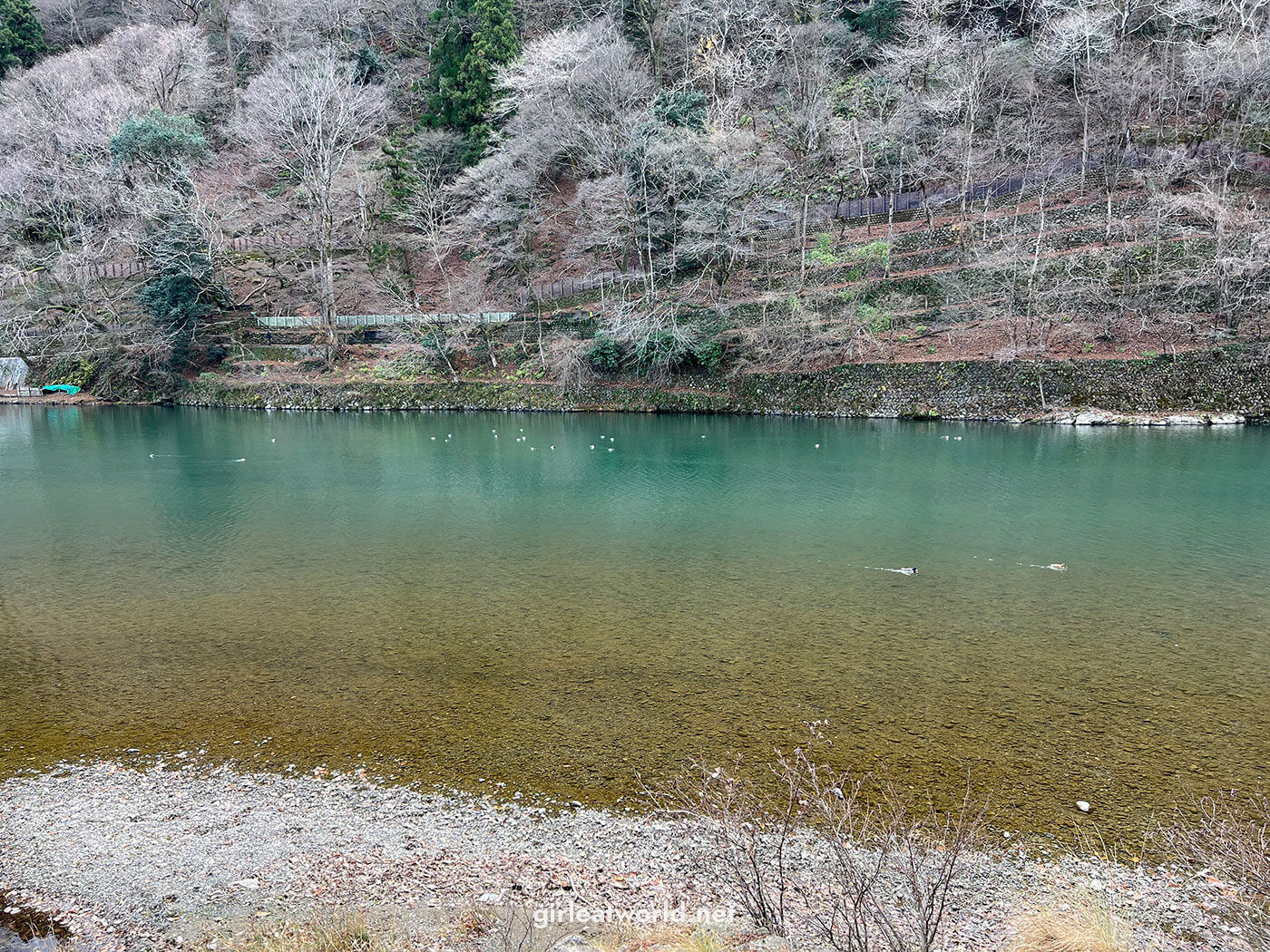
Once you’re done exploring, you could walk down the river to a nearby park along Katsura River, called Arashiyama Park. During Sakura time, this park is filled with cherry blossom as well as Sakura-themed snacks you can buy. I bought a Sakura ice cream here!

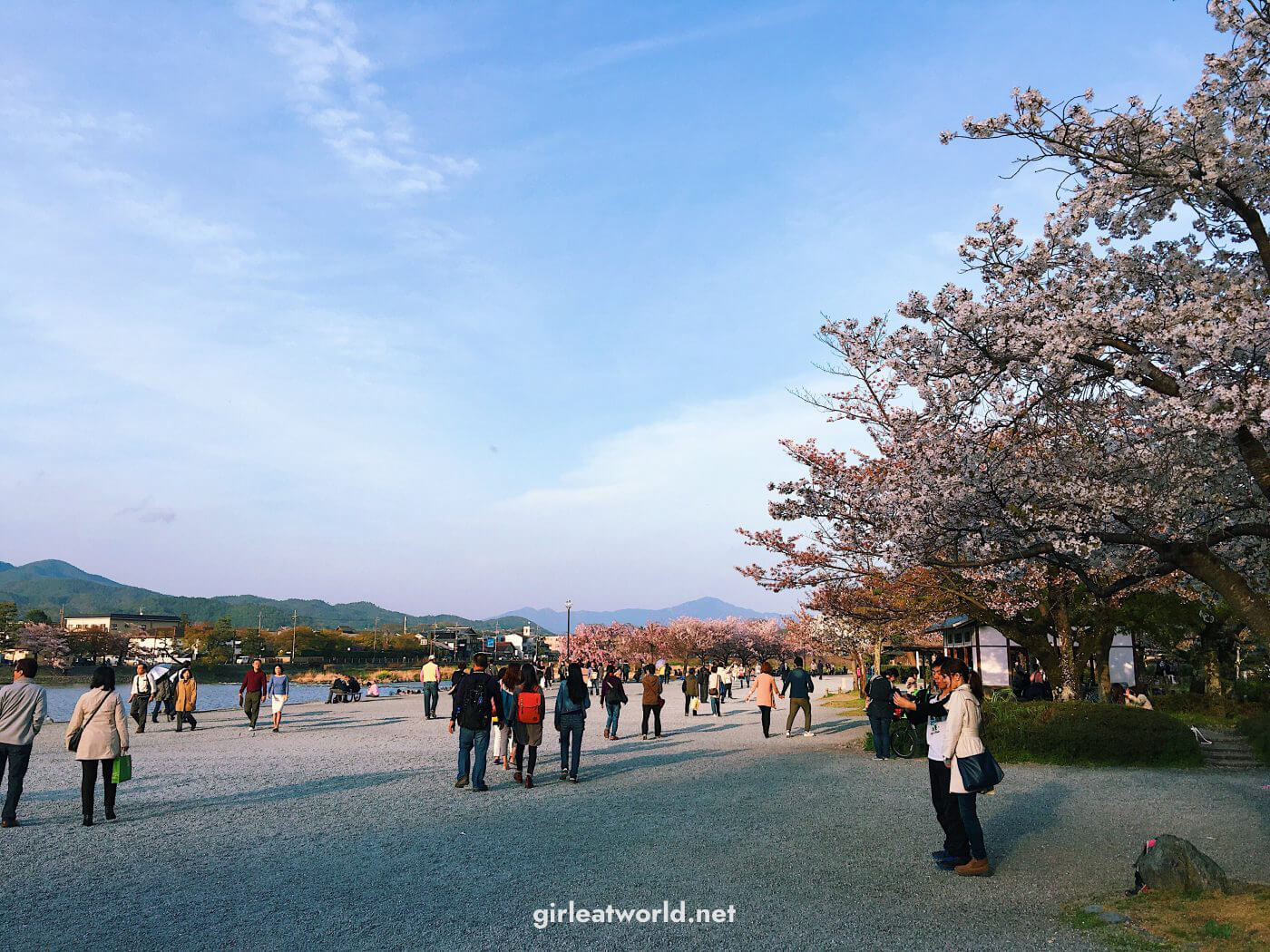
5. Visit the temples in Arashiyama
You can also visit more temples in Arashiyama. Tenryu-ji and Seiryo-ji are the big temples nearby. Each visit would set you back 400 yen per person. What I like about the temples here is that it’s not very crowded, since most tourists would focus on going to the bamboo forest when they visit Arashiyama.

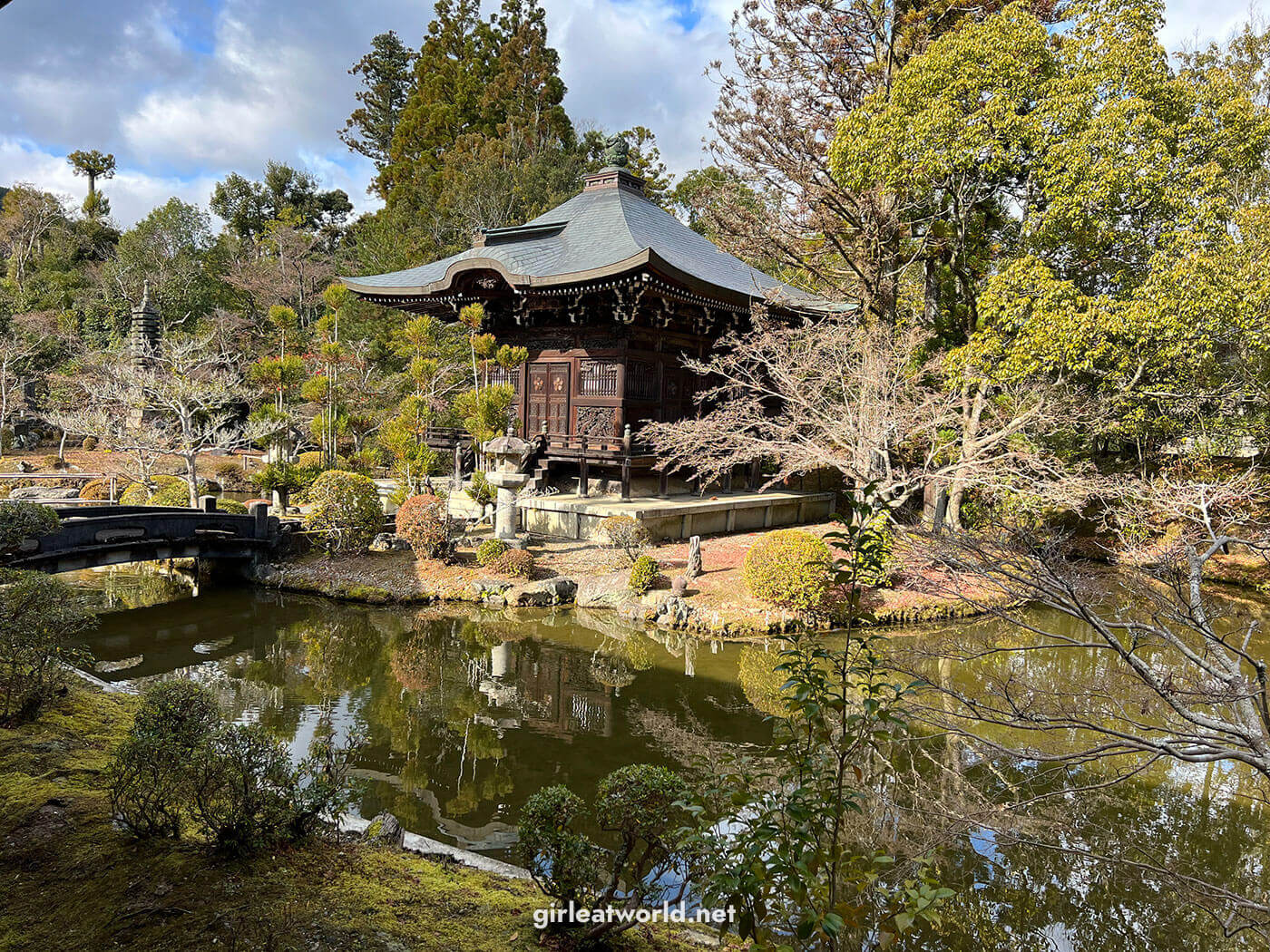
6. Take the Sagano Romantic Train
The Sagano Romantic Train, aka Sagano Torokko Scenic Railway, starts from Torokko Saga Station and takes you to JR Kameoka station. It takes 25 minutes to complete this journey, or 50-60 minutes to do a round trip. The train runs every hour from 9 to 4 PM.
Pre-book your ticket: To make things simpler, you can pre-book a ticket for Sagano Romantic Train and pick it up at the Kyoto station.
The Sagano Romantic train is popular all year round, but especially in the Spring for Cherry Blossom season and in Autumn during the Autumn leaf time as the route is filled with trees that will turn into colorful red and orange during fall. If you’re going during those times, definitely pre-book your ticket because they will sell out.
7. Iwatayama Monkey Park in Arashiyama
Iwatayama Monkey Park is an open-air park where you can see and feed Japanese Macaque. It is not a zoo – the monkeys here are not confined in a cage, because they are wild and are free to come and go as they please.
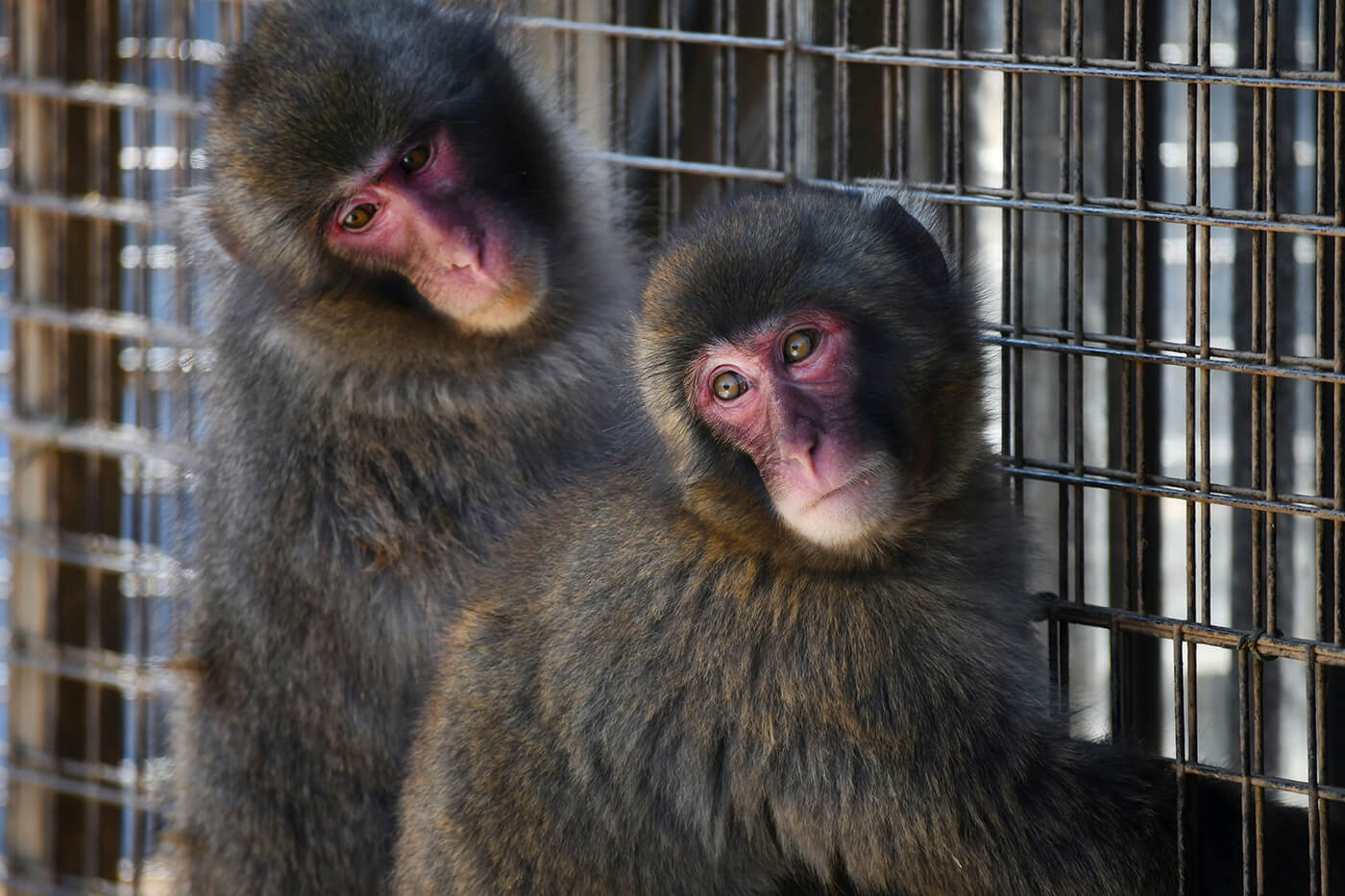
Personally, I have never been because I am scared of wild monkeys! They could be quite territorial.
What else can you do in Kyoto?
Here are a few activities I thought could be interesting that I didn’t manage to fit into the itinerary:
1. Dress up in traditional Japanese clothing
If you want to fully immerse yourself in the Japanese atmosphere, you might want to rent a Kimono (or Yukata if it’s summer) while you’re walking around Kyoto. I saw plenty of tourists who did this and it makes for a good photo opportunity.
Here is where you can rent a kimono / yukata in Kyoto near Kiyomizu-dera.
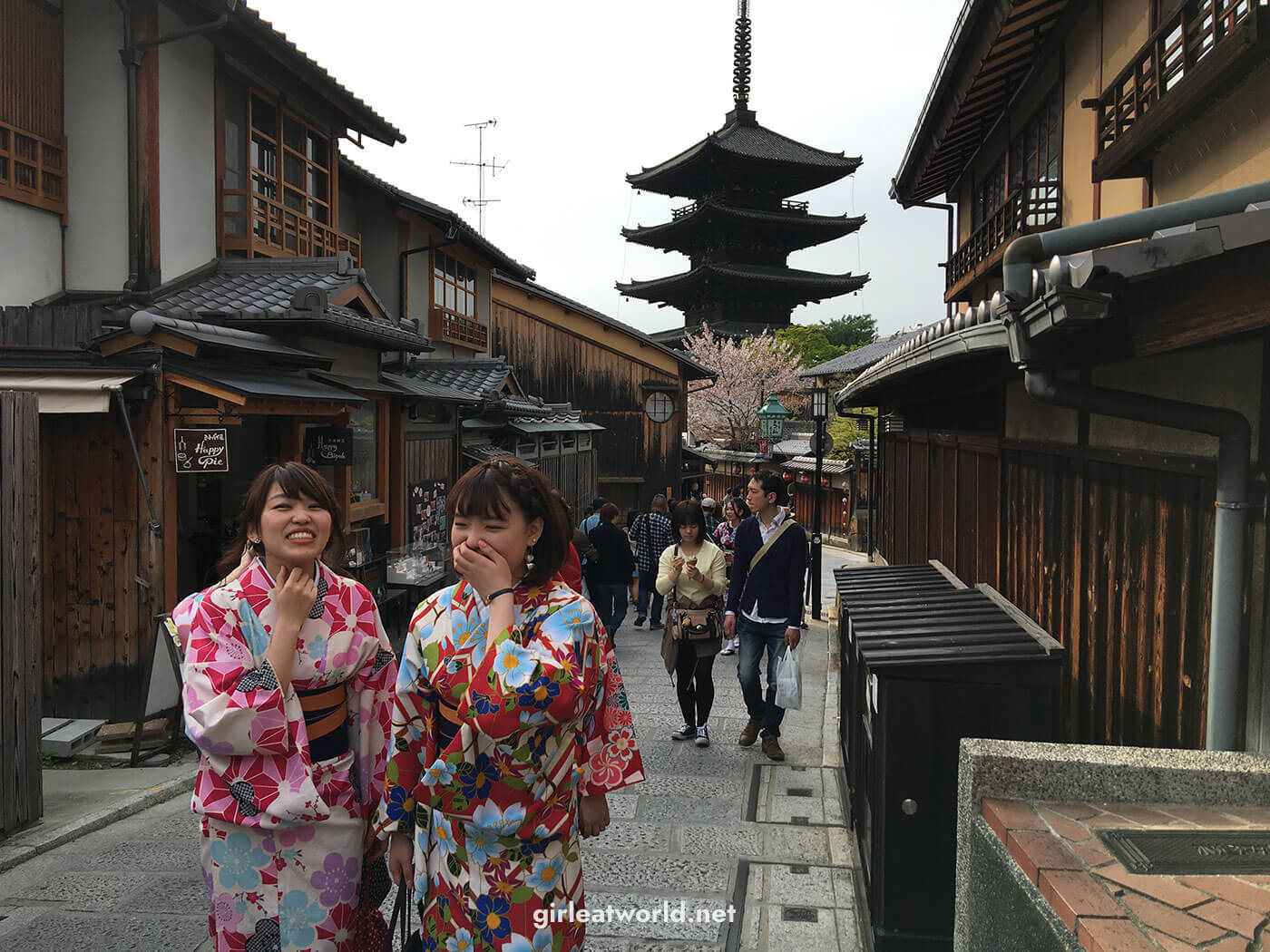
Or, if you want to take it a step further, you can take a peek into the life of a maiko and dress up as a maiko (complete with the makeup). It also comes with a photoshoot so you can remember the experience.
If you’re wondering if it’s considered offensive to wear Japanese traditional clothing – the short answer is no. Japanese culture does not consider it cultural appropriation when a foreigner wears traditional Japanese clothing, especially when you’re wearing it properly!
2. See Kyoto after dark
Temples and shrines in Kyoto close as early as 5 PM. But if you’re lucky, during certain times of the year, you can come back at night to certain temples to see them illuminated with lanterns and lights.
These events are:
- Yasaka Shrine – Open 24/7 and lit up at night
- Kiyomizu-dera special night viewing – Usually closed at 6 PM, but three times a year in Spring, Summer, and Autumn they will extend the closing time to 9:30PM. The most popular after-dark illumination happens in Autumn, usually in the last 2 weeks of November.
- Nijo Castle – Usually closed by 5 PM, but it will open up for special nighttime illumination during Sakura season in the spring. A separate ticket is required for night entry.
- Kyoto Botanical Garden – For a limited time, the garden will open up at night for a light and projection exhibition. You can get tickets via Klook here.
Some events are one-off and don’t repeat every year, so be sure to pay attention to posters when you are visiting during the daytime. They might tell you if there are any special events for nighttime.
What and Where to Eat in Kyoto
There are several dishes that are specialty of Kyoto and you should not miss out on them when you’re here. Here are some of them:
1. Yudofu
The name of this dish tells you a lot about the dish itself. “Yu” means hot water, and “Dofu” means… well, tofu. Quite literally, the translation for this dish is boiling tofu. If you don’t like tofu, you probably won’t enjoy it but I am a tofu lover and I thought it was great! Yudofu is usually served as kaiseki, a Japanese multi-course meal, and it does come at a price.
Where you can have Yudofu in Kyoto:
- Shoraian – By Katsura River near Arashiyama Bamboo Forest. It is a little difficult to find and might require a reservation as the place is small. We were turned away when we tried to walk in.
- Yudofu Sagano – We went to Yudofu Sagano near Arashiyama and had a 10-course kaiseki for 4,000 yen. It was an expensive lunch, but worth it because the food was so good and even being in the restaurant itself was really nice experience. They have a zen garden in the middle!
- Okutan – a 350 years old restaurant with two brances near Nanzen-ji and Kiyomizu-dera. They make tofu fresh at their restaurant.
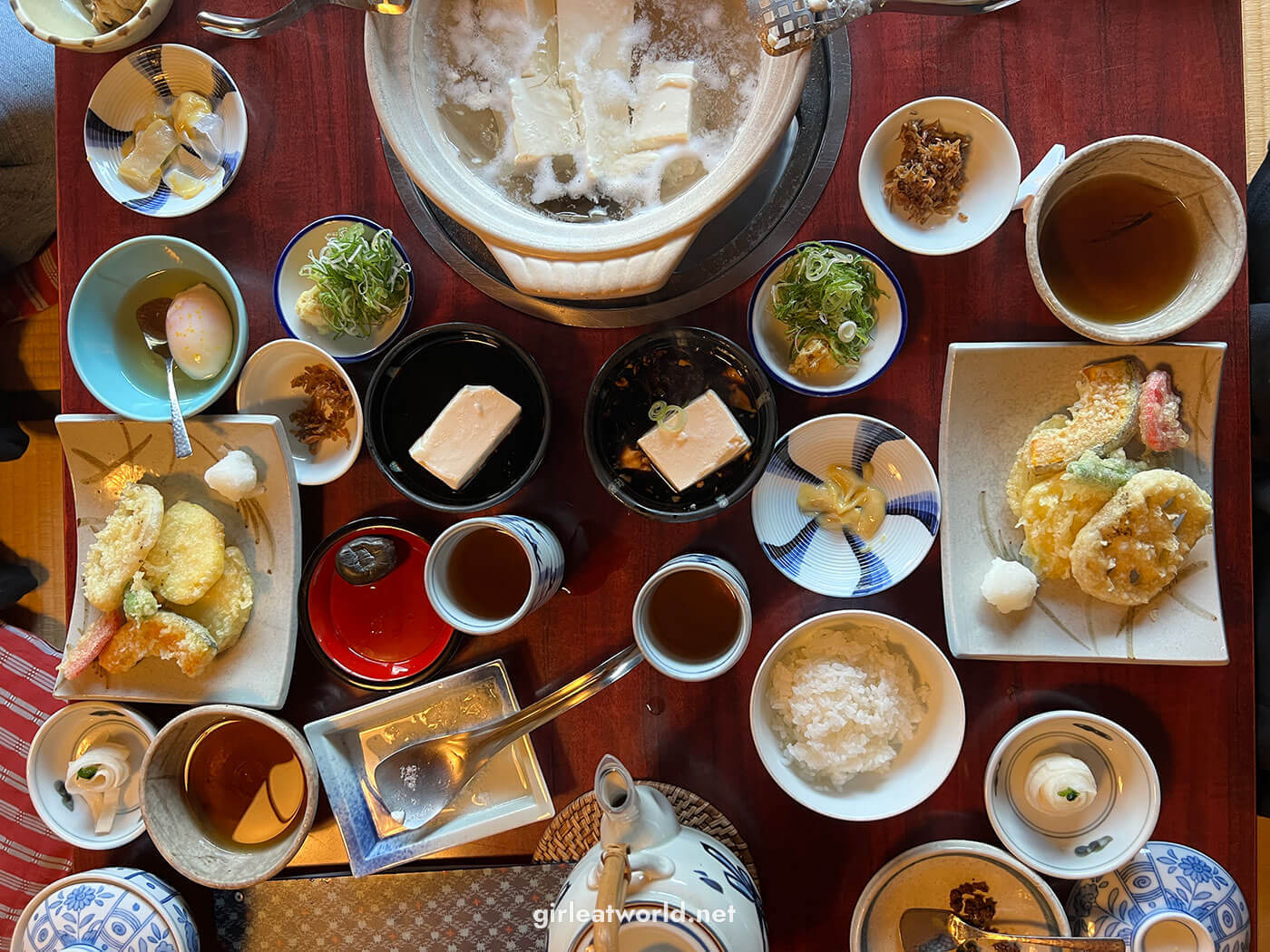

2. Uji Matcha
If you enjoy matcha (fine green tea powder), you’ll want to try matcha from Uji, a city in Kyoto. Uji is blessed with soil that is favorable for growing tea leaves. Matcha from Uji is considered one of the best in Japan, as it is rich in taste and very fragrant.
That’s why you’ll see matcha nearly everywhere in Kyoto – in the form of a tea drink, mochi, green tea ice cream topped with matcha powder, or even chasoba, noodles that are green in color from green tea ingredients.
Where you can try Uji Matcha in Kyoto:
To try Uji Matcha without visiting Uji itself, look out for these names while you are in Kyoto:
- Tsujiri – One of the most famous tea houses originated from Uji in Kyoto. They also have a small ice cream shop at Kyoto station, and their green tea soft serve is one of the best I’ve had.
- Itoh-kyuemon – another famous tea house from Uji. They also have a shop close to Kyoto station, selling dessert and their tea leaves.
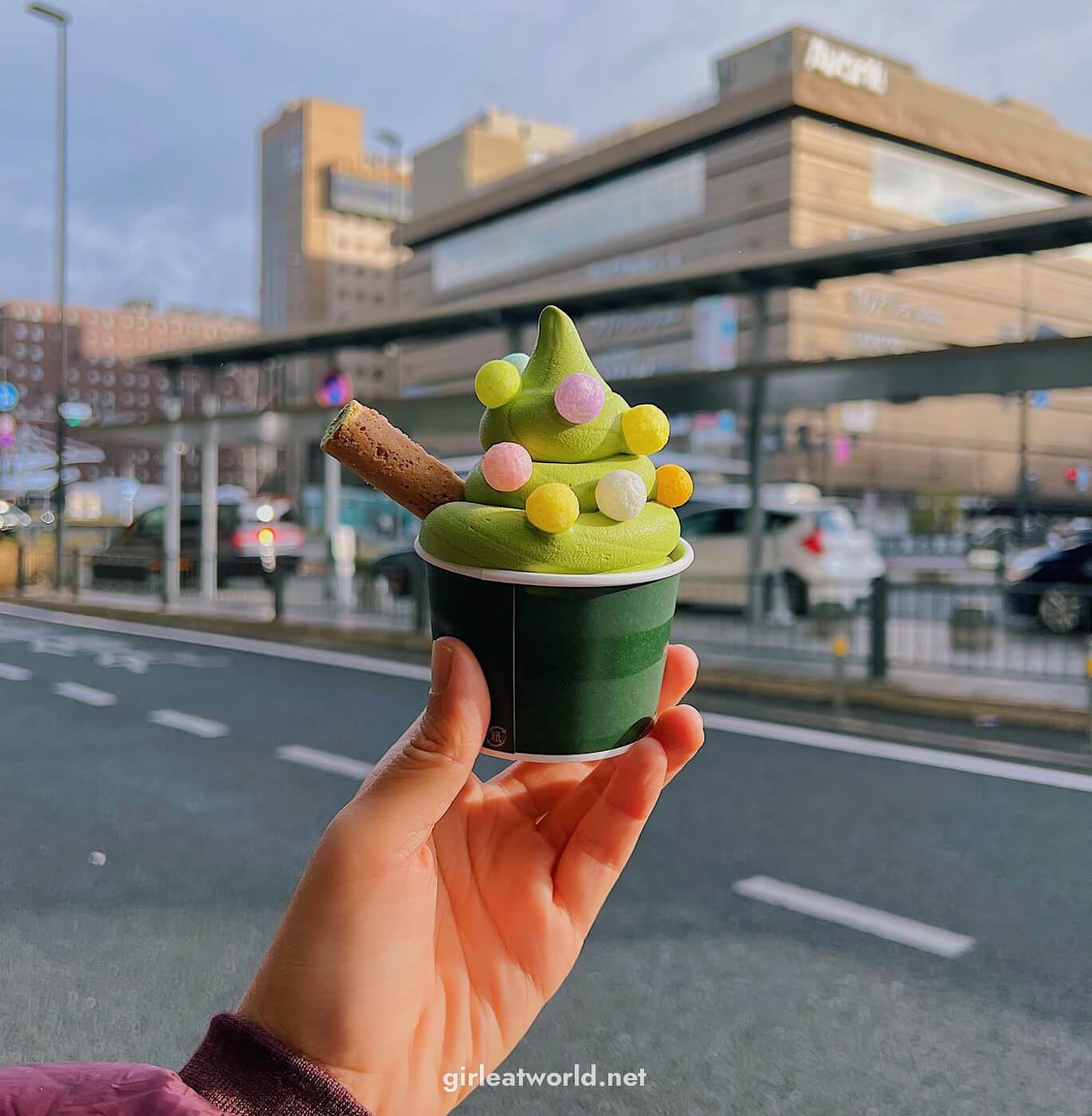
3. Shojin Ryori
Shojin Ryori is a traditional Buddhist cooking, usually served as a multi-course meal. There is no animal product used, making it suitable for vegans, vegetarians, and those who need a halal option.
Shojin Ryori is made using the five basic concepts: five flavors (sweet, sour, spicy, bitter, and savory), five cooking styles (steamed, boiled, roasted, stewed, and raw), and five colors (white, black, red, green and yellow).
Shojin Ryori does come at a price – and it could cost over 10,000 yen per person, so be prepared!
Where you can have Shojin Ryory in Kyoto:
Here are places where you can try Shojin Ryori:
- Shigetsu at Tenryu-ji (map) – near Arashiyama Bamboo forest
- Ajiro (map) – Michelin-starred vegetarian restaurant
- Hyotei (map) – A 400-year-old restaurant that is also a 3-star Michelin, located conveniently near the Higashiyama district
4. Sabazushi
Sabazushi is a type of hand-pressed sushi made from pickled and salted mackerel. This method of preparation dates back to the olden days before refrigeration technologies were invented, and it was not easy to transport raw fish to areas further away from the fishing ports, including Kyoto which is located more inland. Pickling and salting the fish is a method of preserving it for a few more days.
Where to try Sabazushi in Kyoto
- Izuju Sushi (map) – Located in Gion, near the Yasaka shrine. It’s probably the easiest location to get to if you’re visiting Kyoto as a tourist
- Kyosushi Izumatsu (map)
- Hanaore (map)
5. Other notable places to eat in Kyoto
Kichi Kichi Omurice (map – near Nishiki Market and Pontocho Alley) – Have you seen the viral video of a guy serving the perfect Omurice a few years back? that restaurant is Kichi Kichi, and it is in Kyoto! I would highly recommend making a reservation at their website if you intend to go, as the restaurant does not do walk-ins due to its popularity.
Gion Yata (map)- Great restaurant for traditional kaiseki (multi-course) meals.
Ogawa Soba (map – near Kinkaku-ji) – Great soba near Kinkaku-ji. It’s a little out of the way from most other places you’d want to see in Kyoto, but it might be worth it if you’re already in the area for Kinkaku-ji.
Kanoko (map – near Fushimi Inari Taisha) – A simple restaurant right off the exit of Fushimi Inari Taisha. It looked unassuming from the outside, but they have a zen garden in the restaurant. They serve the usual suspect of Japanese cuisine fare like soba, tempura, and set meals. Such a nice atmosphere and great food!
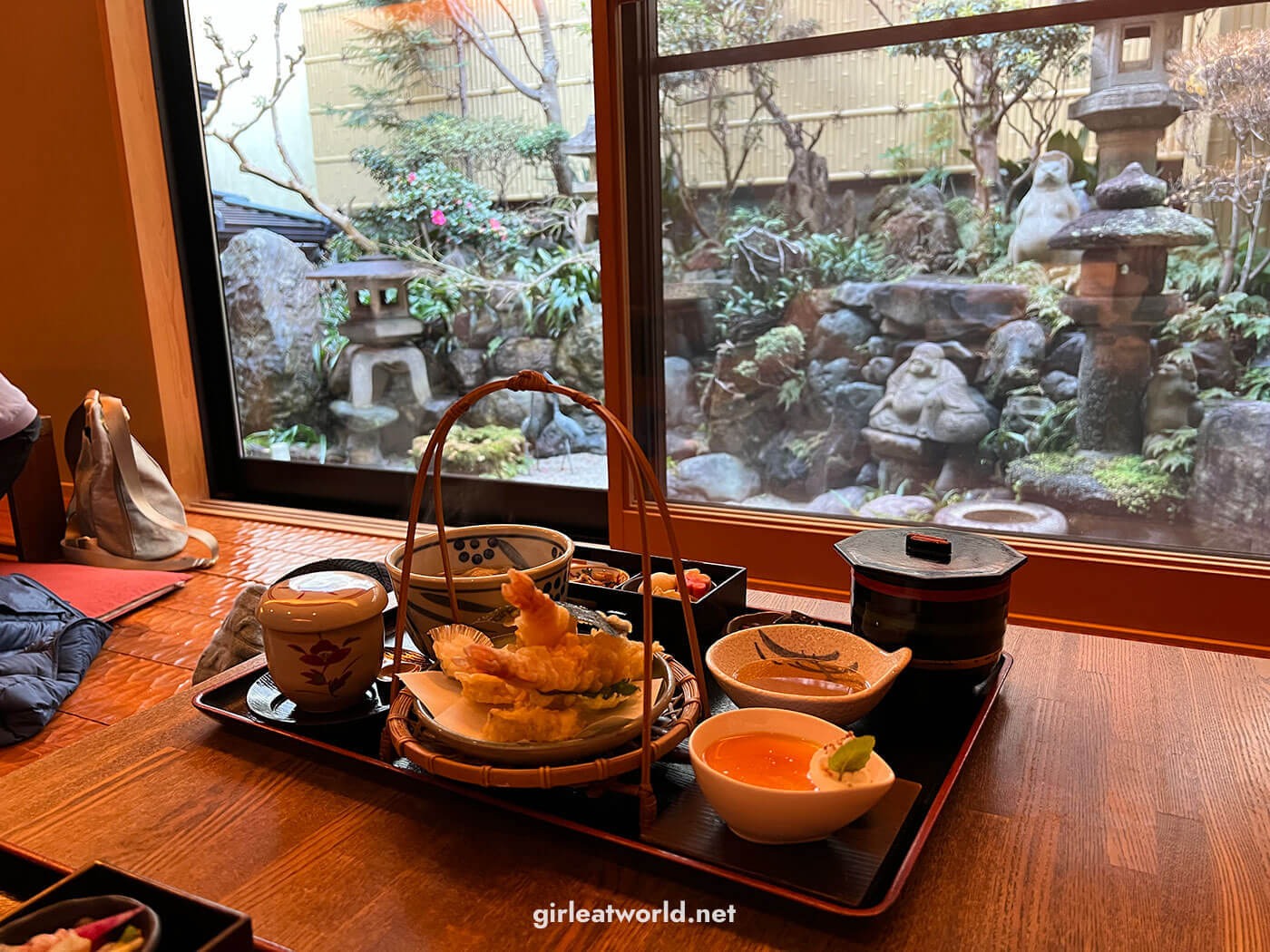
Bread & Espresso & Arashiyama (map) – Unique coffee shop near Arashiyama bamboo forest. It’s pretty popular so you might have to wait for a table.
%ARABICA Kyoto (in Higashiyama and Arashiyama) – This popular coffee roaster has made its way globally, but they originated in Kyoto.
Kurasu – Another popular specialty coffee shop originating from Kyoto. There is a branch near Kyoto station and another in Ebisugawa.
Okay, folks, that’s all I have on Kyoto. If you end up making it to Kyoto, please comment below and let me know how your trip went. And if my guide has helped you, please let me know too! I love reading and responding to your comments.
Until next time 🥰
Japan is one of my most-written topics in this blog and I go to Japan quite often. If you’re looking for more posts about Japan, please click here!

Love this itinerary and all the others you’ve written. Me and my friends are gonna use these as our main itineraries for our trip and it’s helping a lot with understanding the many different sights to see in Japan.
Just one thing, the link for the Kyoto map seems to not be working, is there anyway I could get the map somehow. It would make things so much easier! Thank you so much!
Hey Abbas, thanks for the kind words 🙂 I checked the map link again and it’s working for me. Can you check again? It should link to a google maps.
I absolutely loved your itinerary for Kyoto! The mix of traditional and modern sights you suggested is perfect for first-time visitors. I can’t wait to try the local cuisine recommendations you mentioned—especially the matcha treats! Thanks for the tips!
Hi Melissa,
I will be travelling to Kansai area in March 8-16.
8-10 Mar – staying in Kyoto
10-16 Mar – staying in Osaka, day trip to Kobe & day trip to Nara
Do you think I can just buy the Kansai pass thru and use it from Kansai airport to the rest of the places? What other passes to you recommend.
Thank you for your time!
Hi Melissa,
Thank you for your site. It’s super helpful.
I am wondering what kind of pass I should be getting when in Japan.
We plan to to fly to KIX on March 10
Here is our itinerary
March 10 Osaka
March 11 leaving Osaka and spent the day in Nara. After visiting Nara, we will be leaving Nara for Kyoto, and stay in Kyoto
March 11 to March 14 4 nights in Kyoto
March 15 leaving Kyoto, and arriving in Hakone
March 15 and March 16 2 nights in Hakone
March 17 leaving Hakone and arriving in Fuji 5 lake
March 17 and 18 both nights in Fuji 5 lake
March 19 leaving Fuji 5 lake and heading to Tokyo
March 19 – March 22 – 3 nights in Tokyo
In the Kensai area, should I get JR west Kensai pass, or should I get Kintensu 1 day pass, and purchase Haruka airport express to Osaka separately?
What would you recommend to go from Kyoto to Hakone?
Thank you so much.
Hey Jenny,
Your itinerary used to be covered by the unlimited JR, but since the price increase it is no longer worth it.
For Hakone and Fuji Five Lakes, I recommend looking into the Fuji-Hakone pass. This include the one way back from Fuji five lakes to Shinjuku. However it is only valid for 4 days, so you might want to activate it on your second day in Fuji five lakes.
For the Kyoto to Hakone portion, you’ll have to buy the tickets a la carte.
For Kansai, both of the options you mentioned are good, it just depends on your preference – do you like taking JR trains more or are you ok with the Kintetsu trains?
Melissa,
your blog is super helpful with planning of my Japan trip itinerary in late April/early May. I have prepared the draft of the plan as follows – however i stil cannot determine whether i am not spending too much time in Tokio, yet adding Nikko as day trip would mean i would spend most of that day travelling 🙂 Is the below reasonable or should i play with dates?
Date Activity
2024-04-20 arrival at KIX Osaka, checkin in hotel – dinner Dotonbori
2024-04-21 Osaka – day trip to Nara
2024-04-22 Koyasan – arrival ca noon, sighseeing of temples, evening cementary visit.
2024-04-23 Koyasan – early morning sightseeing return to Osaka (Osaka Castle and temples)
2024-04-24 Trip to Hiroshima with stop over in Himeji
2024-04-25 daytrip Mijaima, evening departure to Kyoto
2024-04-26 Kyoto – Fusimi Inaria Taisha, Nishiki market, Gion
2024-04-27 Kyoto – Arashima Bamboo Grove, Kinkaku-ji, Kiyomizu Dera. Pontocho
2024-04-28 Kyoto – Hokanji Temple, departure to Tokio
2024-04-29 Tokio – Shinjuku, Shibuya (Gotokuji Temple, Meiji Shrine, Park Yoyogi, Harajuku,Roppongi Hills )
2024-04-30 Tokio – Toyosu Market, Tsukiji Market, Ginza and Tokyo Station, TeamLabs (?), Imperial palace gardens
2024-05-01 Tokio – Asakusa (Imado. Senso-ji Temple, Akihabara, Park Ueno, Akihabara i Ikebukuro,
2024-05-02 Tokio – Hakone day trip
2024-05-03 Tokio – day trip Kamakura –
2024-05-04 Tokio – souvenir shooping,evening Departure from Narita
Hey Krysztof, I think your itinerary looks very reasonable! You can save Nikko for later since you’re already heading to Hakone (the vibe is somewhat similar). I myself didnt go to Nikko until my 3rd visit to Japan. Just be mindful of the first few days of May being Golden Week. It is one of Japan’s largest holiday and there will be more domestic tourism on those days. However tourist attractions should still be open.
Hi Melissa,
So basically i can just rent a bicycle and cycle around Kyoto the whole day before i head back to Osaka?
Was thinking if i should stay in Kyoto because I plan this way:
Day 1-2 : Osaka
Day 3 : Kyoto
Day 4-6 : Tokyo
Day 7-8 : Hakone
Hey Mandy, that sounds good to me! I highly recommend biking around Kyoto if the weather is good. Since you plan to head out to Tokyo, it could be good to stay in Kyoto if you want. I would try to stay near the JR station.
Hi Melissa,
Thanks for such a helpful writeup.
I clicked on the recommended accomodations and it seems like none are taking reservations.
Are they perhaps alr closed due to the pandemic?
Would you have other recommendations for accom?
Thanks alot! <3
Hey Claire, they are still operational, but popular so they may be sold out on the days you are looking at
Hi Melissa,
I plan to travel to Kyoto Osaka in mid November this year.
May I know when you travelled to Kyoto Osaka? I meant in fall foliage or before that?
I would like to ask, is it worth to reschedule my plane to late Nov when fall foliage? because i need to pay penalty fee to airlines.
Is mid of Nov worth or not?
Thanks
Ellen
Hey Ellen, I can’t say because it’s different every year, but generally for Osaka and Kyoto the peak is at the end of November. You can refer to this map: https://www.japan-guide.com/e/e2014.html
Hi Melissa
Thanks for the comprehensive write-up. We are making a trip to Kyoto, Hiroshima and Osaka (10 days in total….taking it slow as we have some senior citizens with us). Am wondering if I should get the 5 days JR West pass and activate it only when in Kyoto to Hiroshima and return to Osaka, as we plan to stay in Hiroshima for 3 days, or should I get the 7 days pass? And would it be different compared to JR All Pass or should I stick to JR West Pass? Thanks
Hey Dave, by JR West, do you mean the JR Kansai-Hiroshima pass with 5-day validity? As far as I know, the JR West Kansai only has a 1-4 day validity and doesn’t cover Hiroshima. and by JR All do you mean the JR Whole Japan one?
In any case, the bulk of the train price would be the train going from Kyoto to Hiroshima and back to Osaka, like you mentioned so I would make sure to activate the JR validity to cover those days. So for example it sounds like your itinerary might look like this:
Day 1-2: Kyoto
Day 3-6: Hiroshima
Day 7-10: Osaka
I would then activate the JR Pass on day 3 when traveling to Kyoto-Hiroshima, and make sure it is still valid on Day 7 when traveling to Hiroshima. Given the trains are already 12,000 yen one way without JR Pass, It sounds like the JR Kansai-HIroshima is what you want.
Hi
Do I need the Kansai JR pass if I stay in Osaka and travel to Kyoto for 3 days?
Thanks
If you’re only traveling to Kyoto, I would just take the local train and not buy JR pass. Unless you want to take the shinkansen from Osaka to Kyoto. But the time difference isn’t much (15 mins by shinkansen vs 25-30 mins by local train from Osaka)
Hai Melissa,
Thank you for the travel info provided. It help me a lot on my journey this month.
But, may you help me to explain regarding Kansai Area Pass? I still don’t understand the use of trains in Kansai. Do I need to buy a Kansai Area Pass ticket to visit places around Kyoto, Osaka and Nara? and is the Kansai Area Pass a JR pass? and can I use it to take the train from the airport to Kyoto? Sorry for so many questions. I have read a lot of information, but regarding the train I still confuse, either the train is local train or the JR train.
Thank you.
Thanks this was so helpful!!
I really love your sharing on Kansai area. Thanks!
Do you find Osaka and Kyoto is pram accessible? I am bringing my 3 years old kid there.